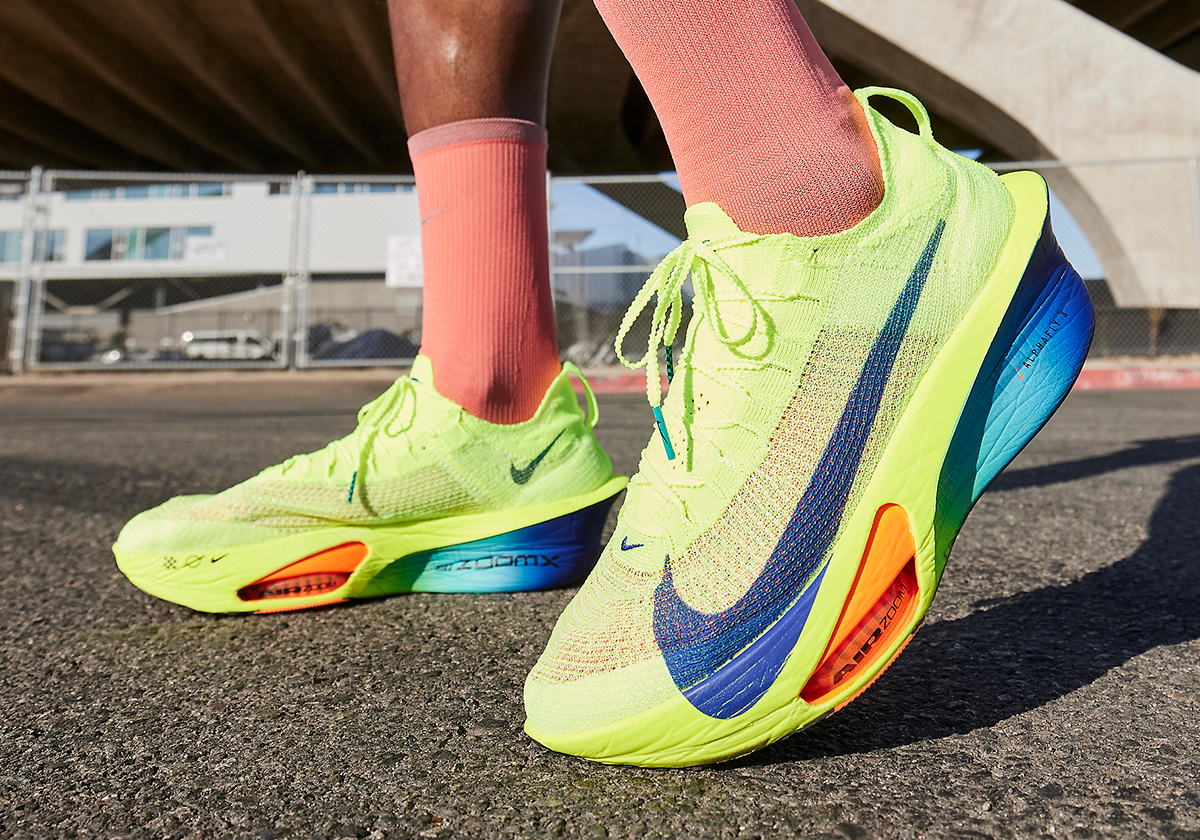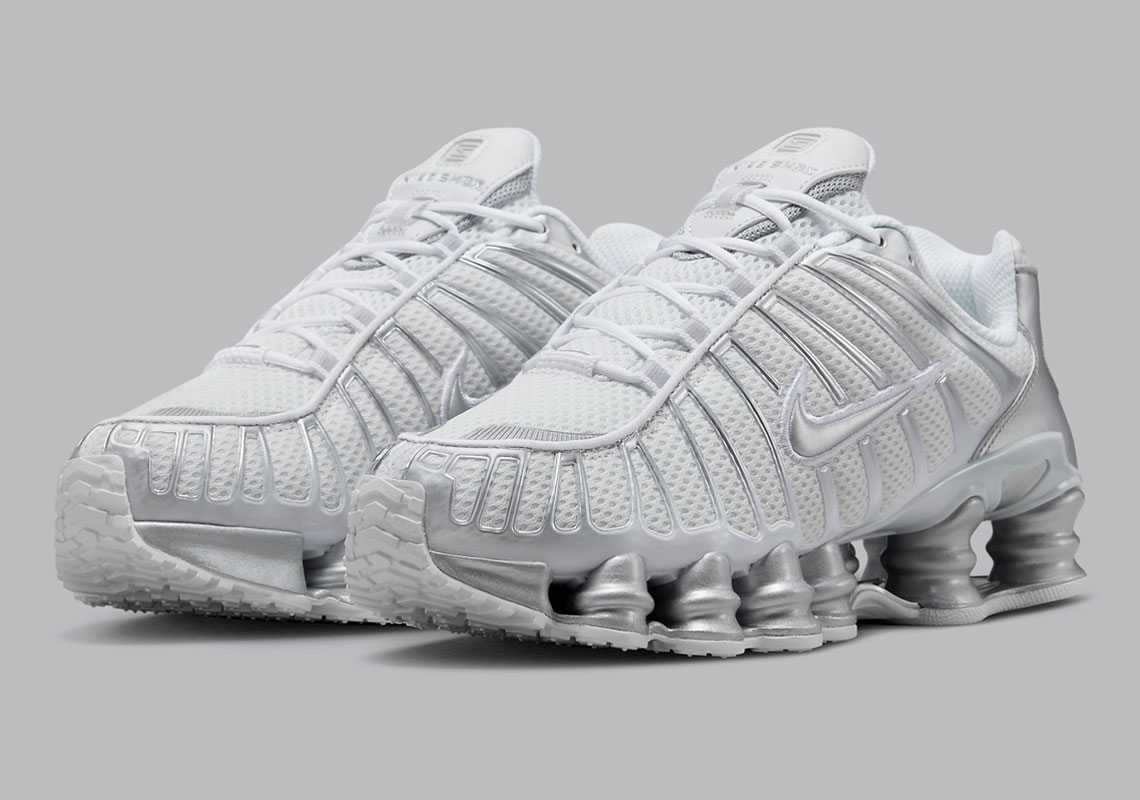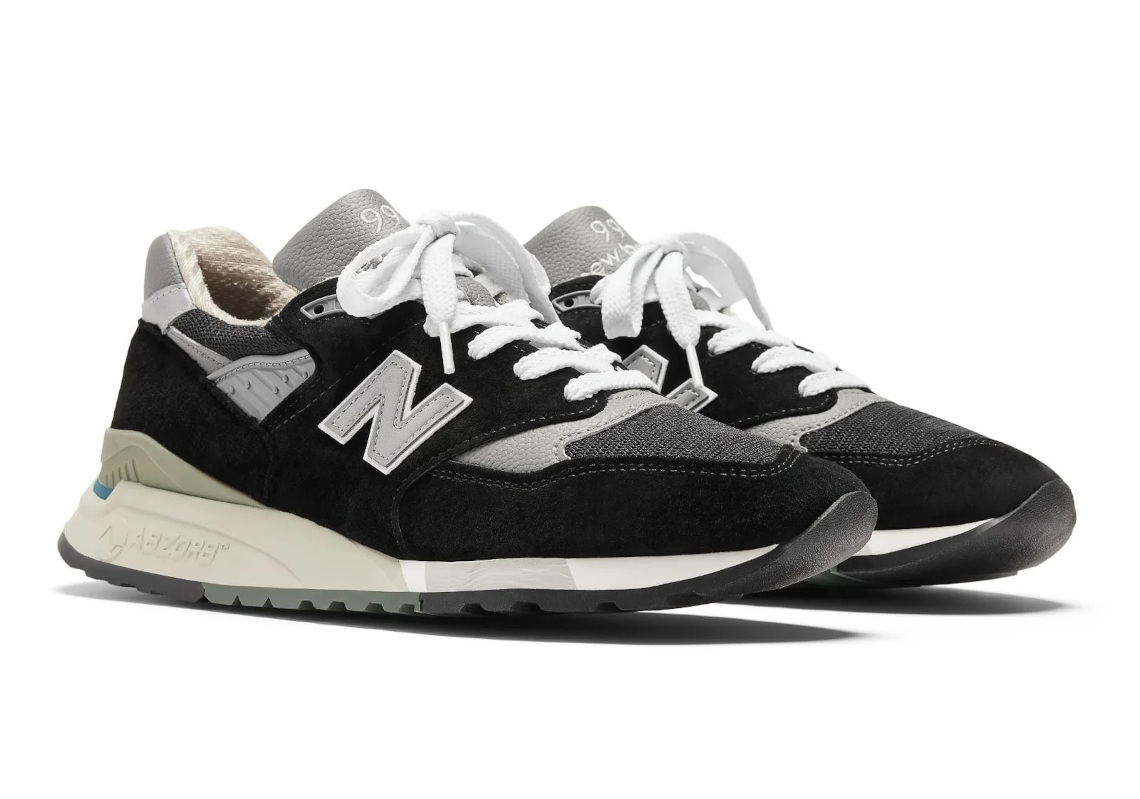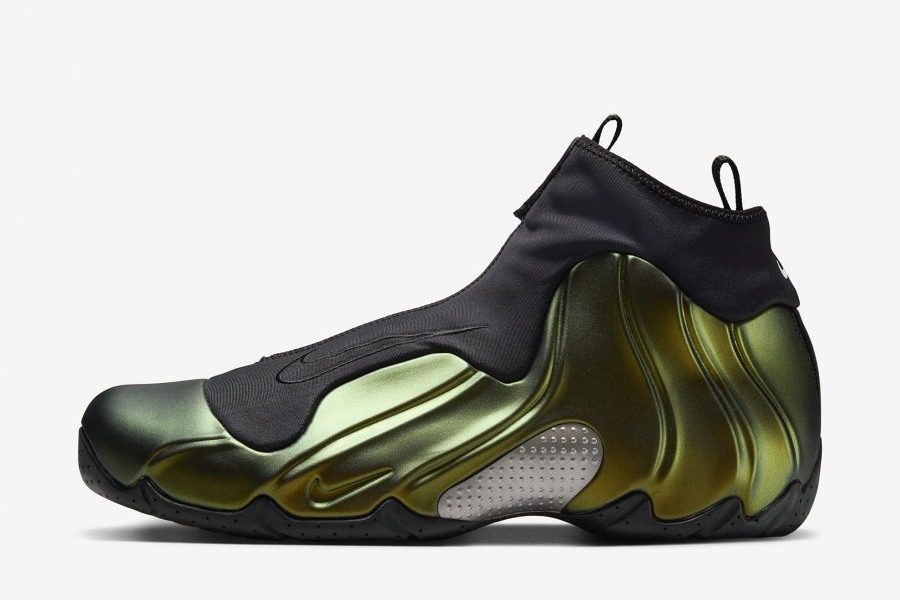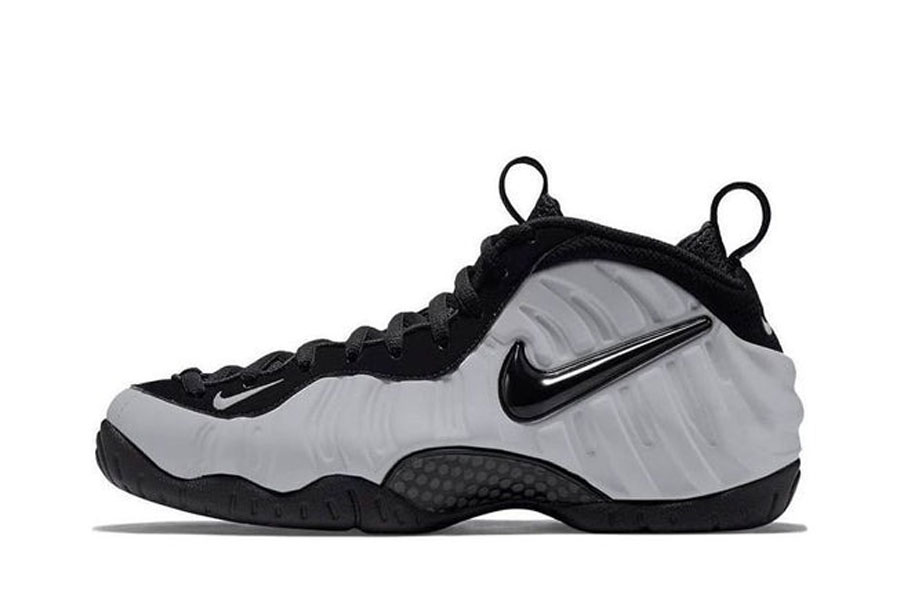The Nike AlphaFly 3 “Volt” is set to re April 4th, 2024 with an MSRP of $285. Mens and womens sizes will be available. See the purchase links just below to cop these ahead of marathon season.
WHERE TO BUY
Nike ZoomX AlphaFly 3
US 04/04/2024 Thursday
| Retailer | Release type | Status |
|---|---|---|
| Nikestore US | Standard | Check Site |
| DICK'S | Standard | Check Site |
WHERE TO BUY
Nike ZoomX AlphaFly 3
US 04/04/2024 Thursday
| Retailer | Release type | Status |
|---|---|---|
| Nikestore US | Standard | Check Site |
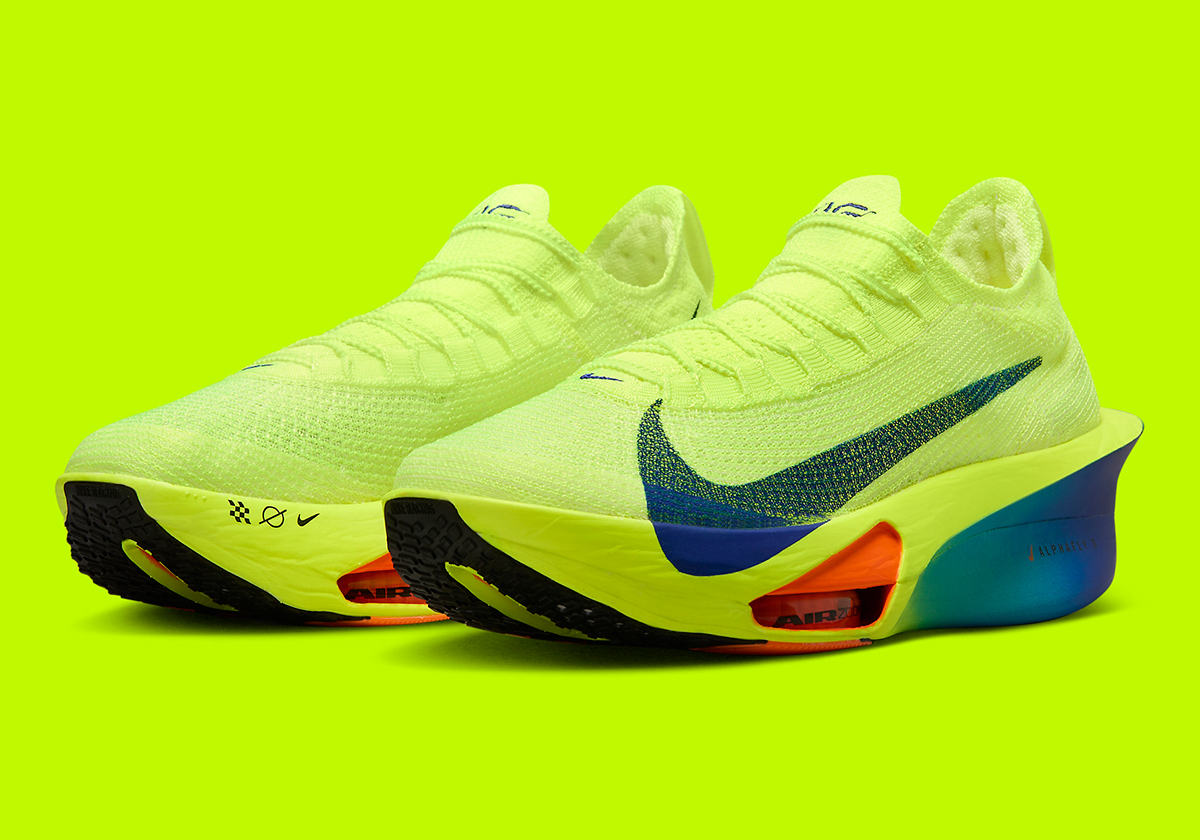
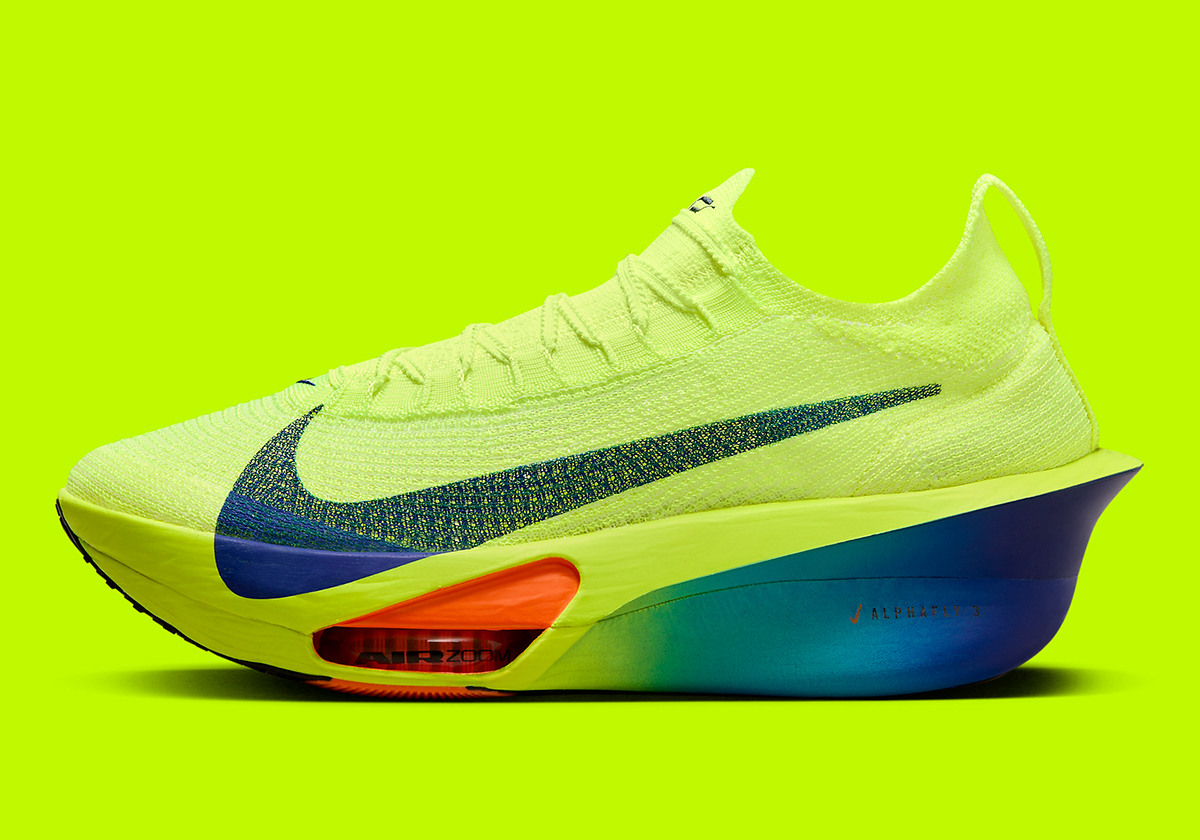
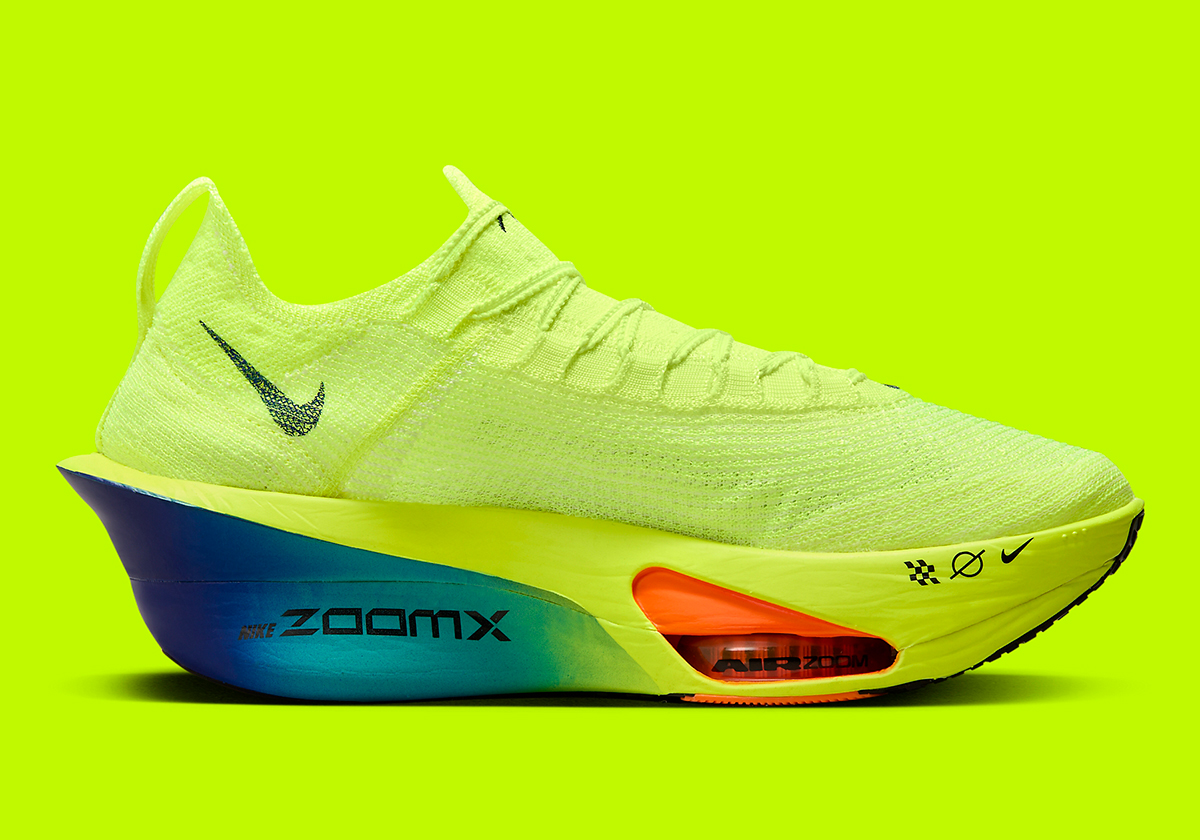
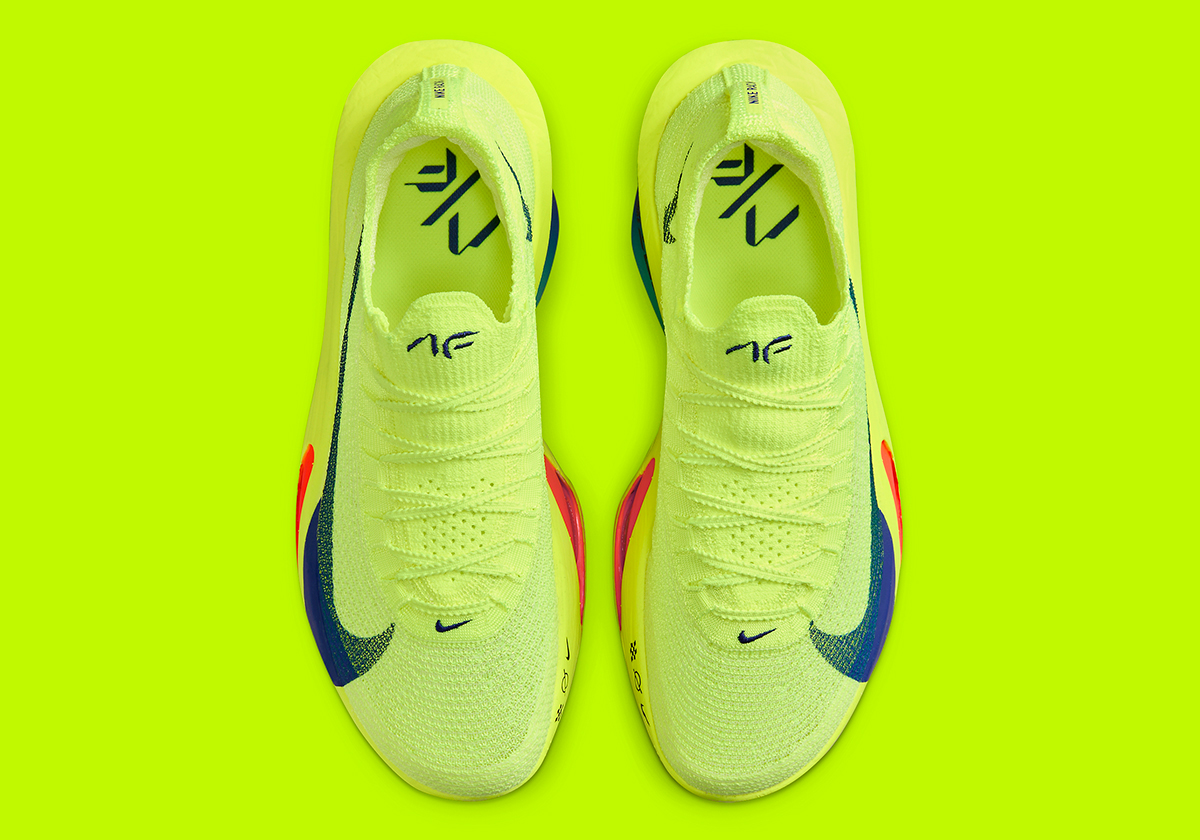
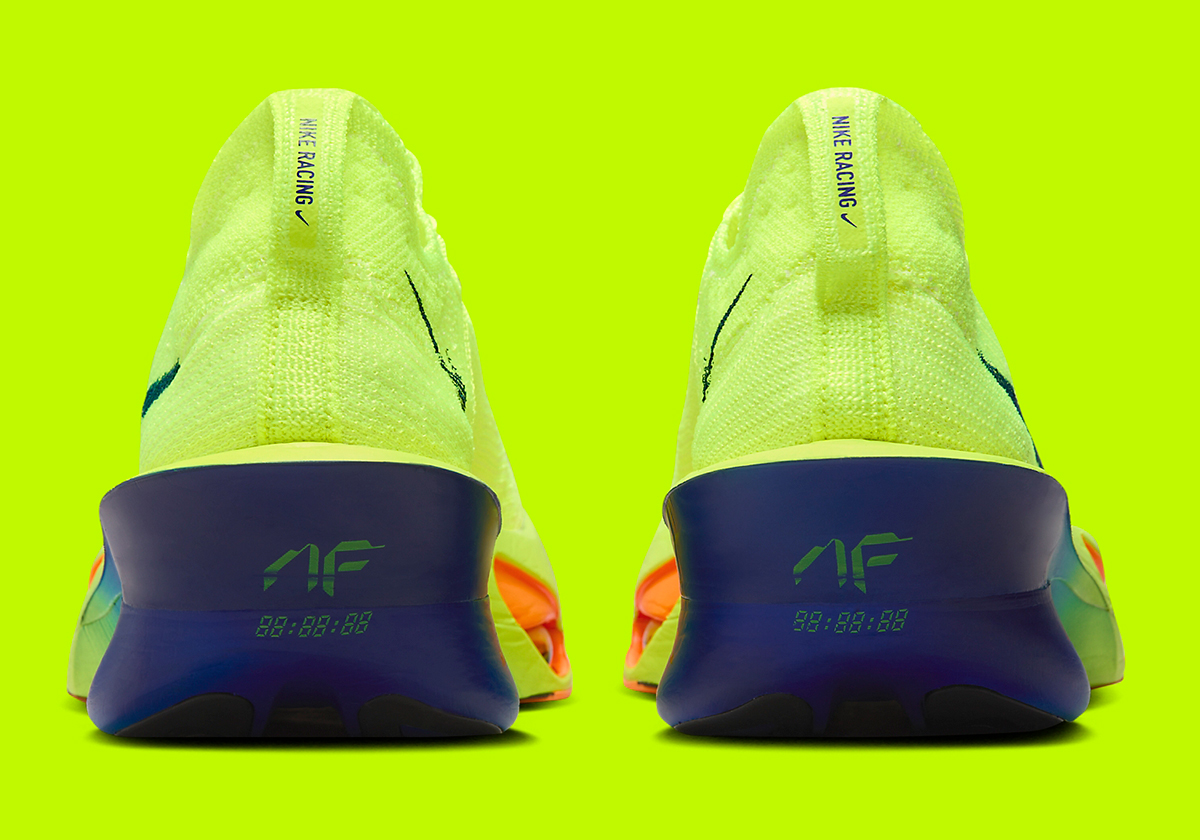
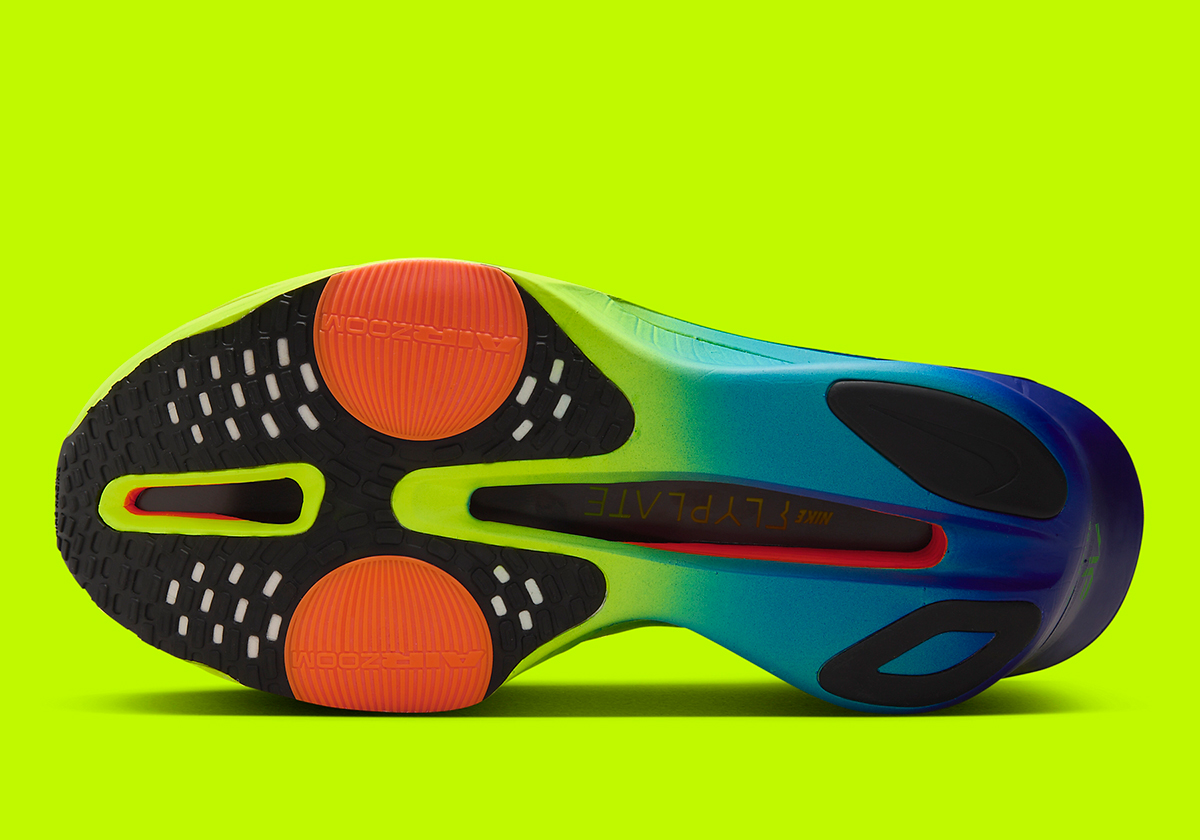
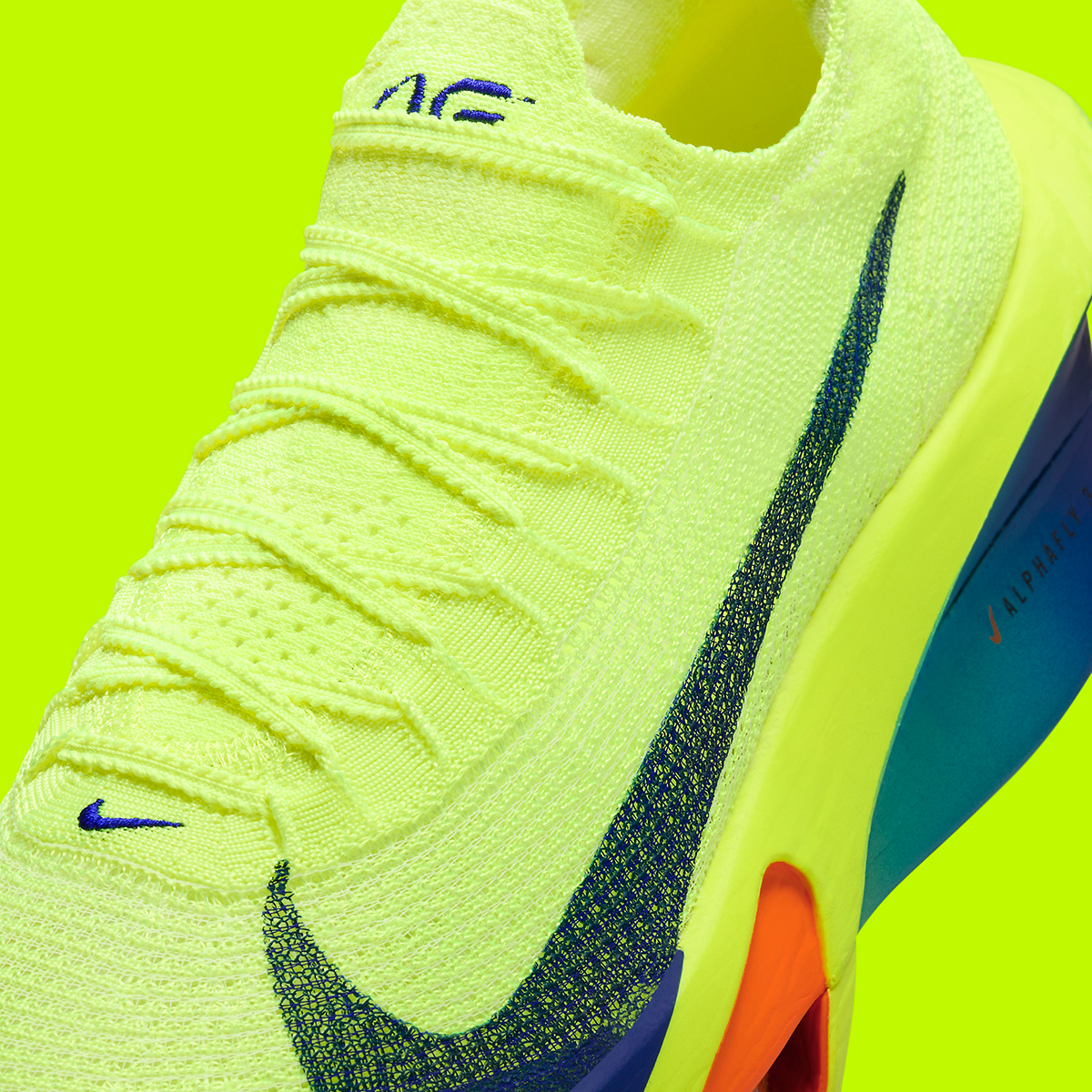
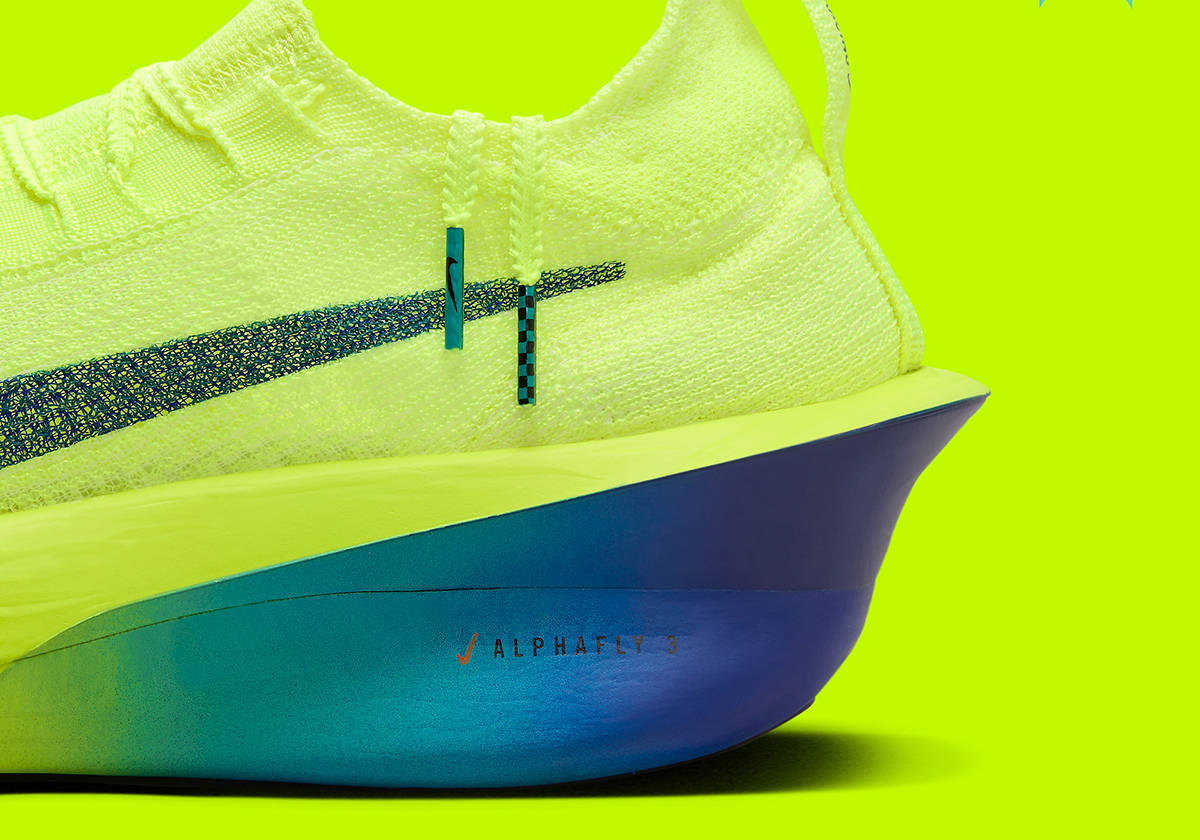
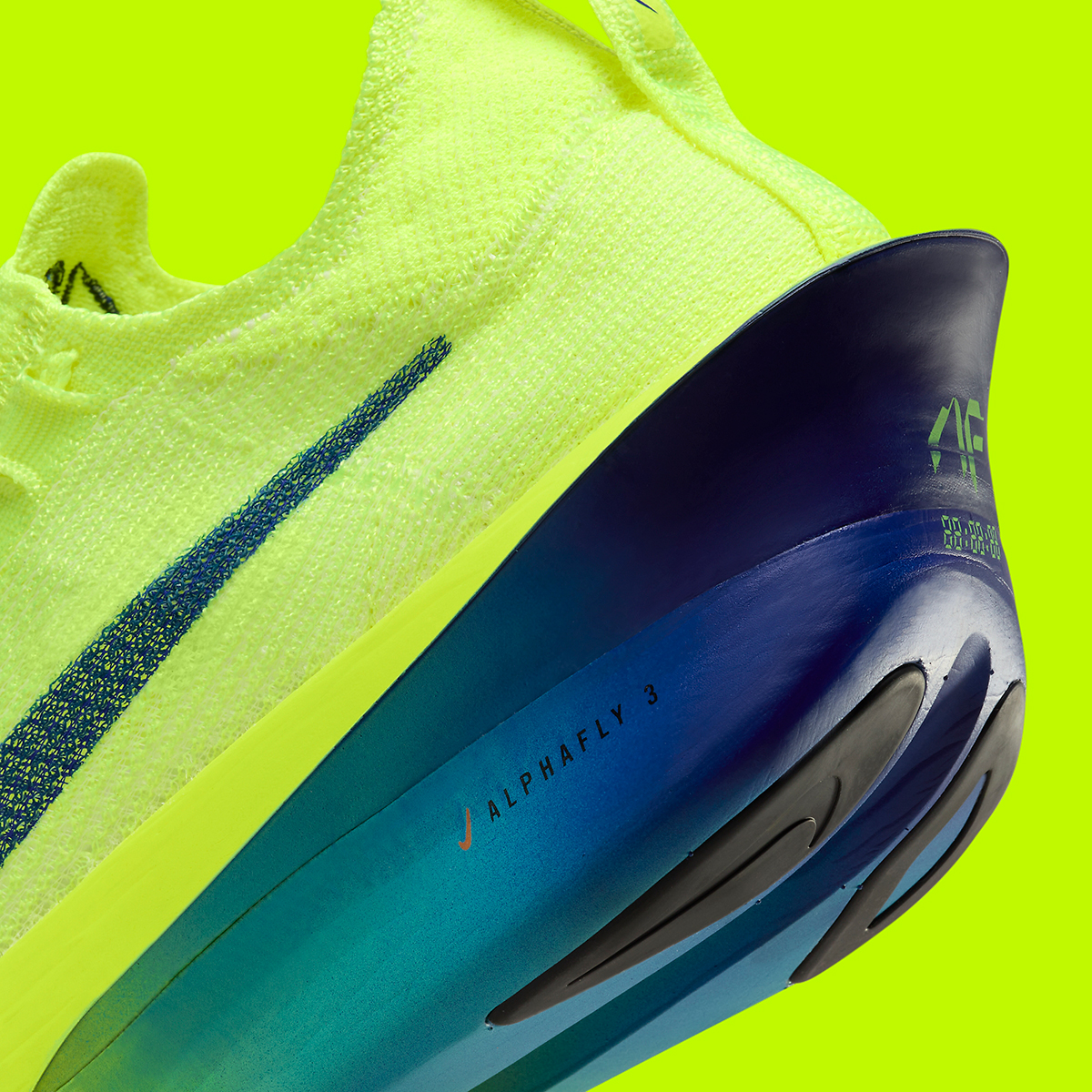
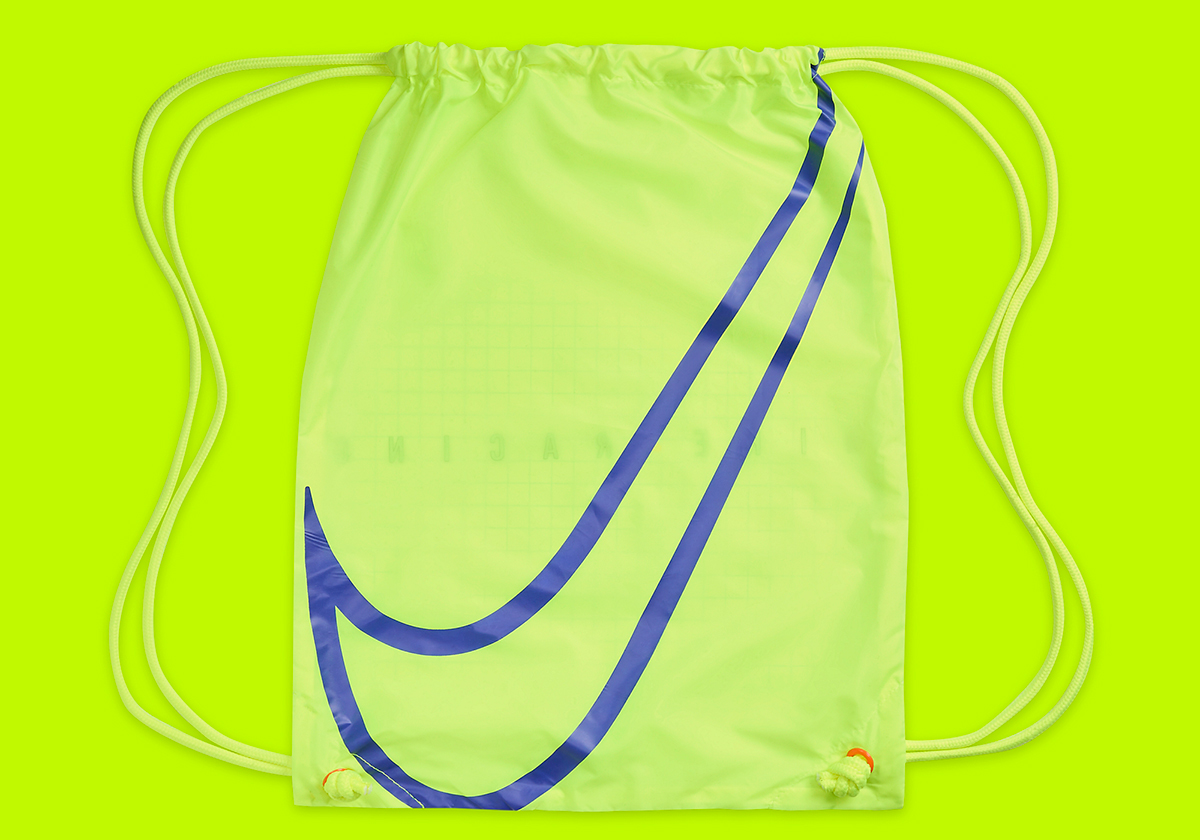
The “Volt” colorway is joined by a multi-colored midsole that fuses Concord at the heel Dusty Cactus and adds Total Orange accents at the visible Zoom pods at the fore-foot. The same Concord/Dusty Cactus pairing appears on the sprayed-on Swoosh logo on the Flyknit upper.
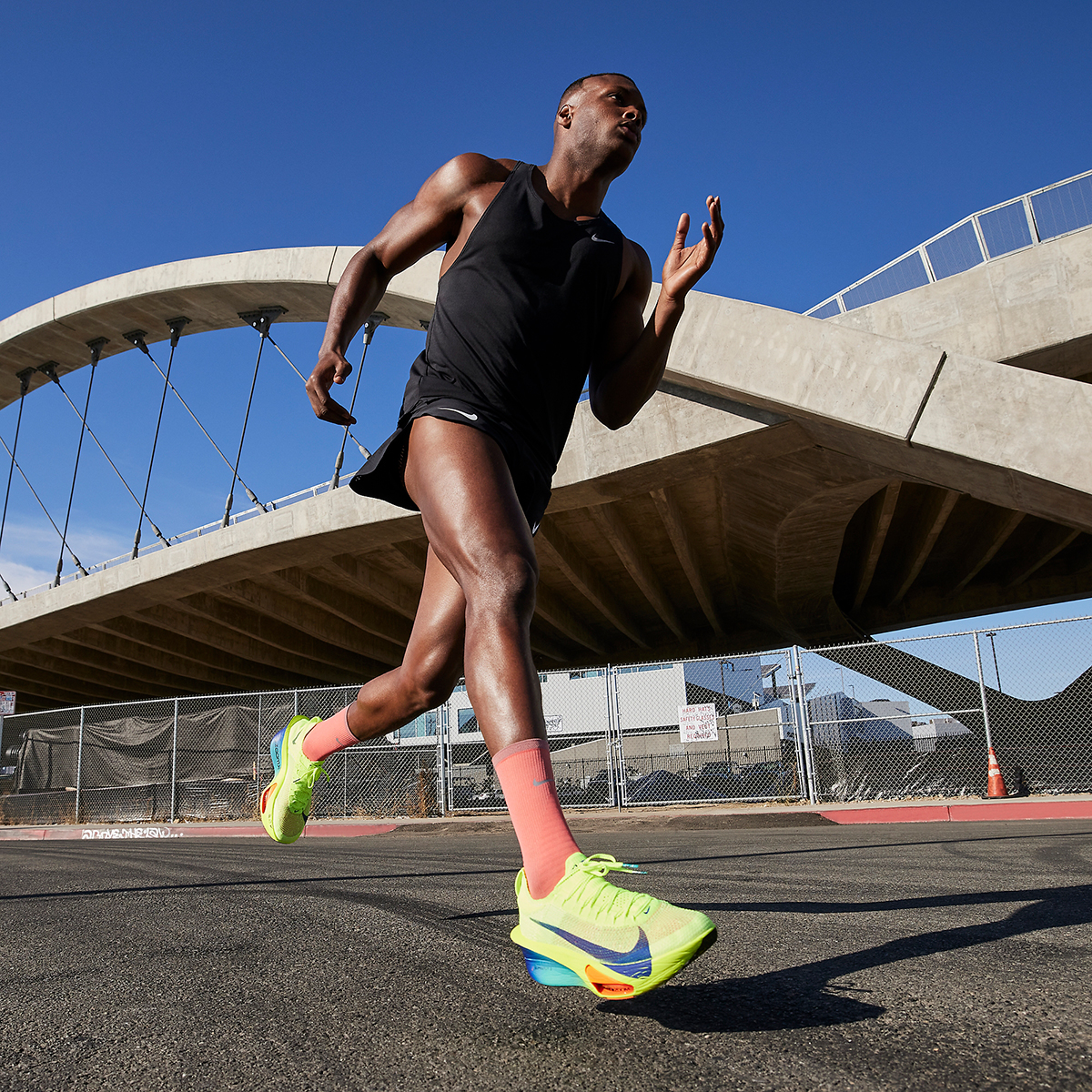
—
The Nike AlphaFly 3 “Prototype” has released online. The shoes are currently sold out on Nike, but potential restocks may come at a later date. Stay tuned for more first looks at upcoming Alphafly 3 colorways.
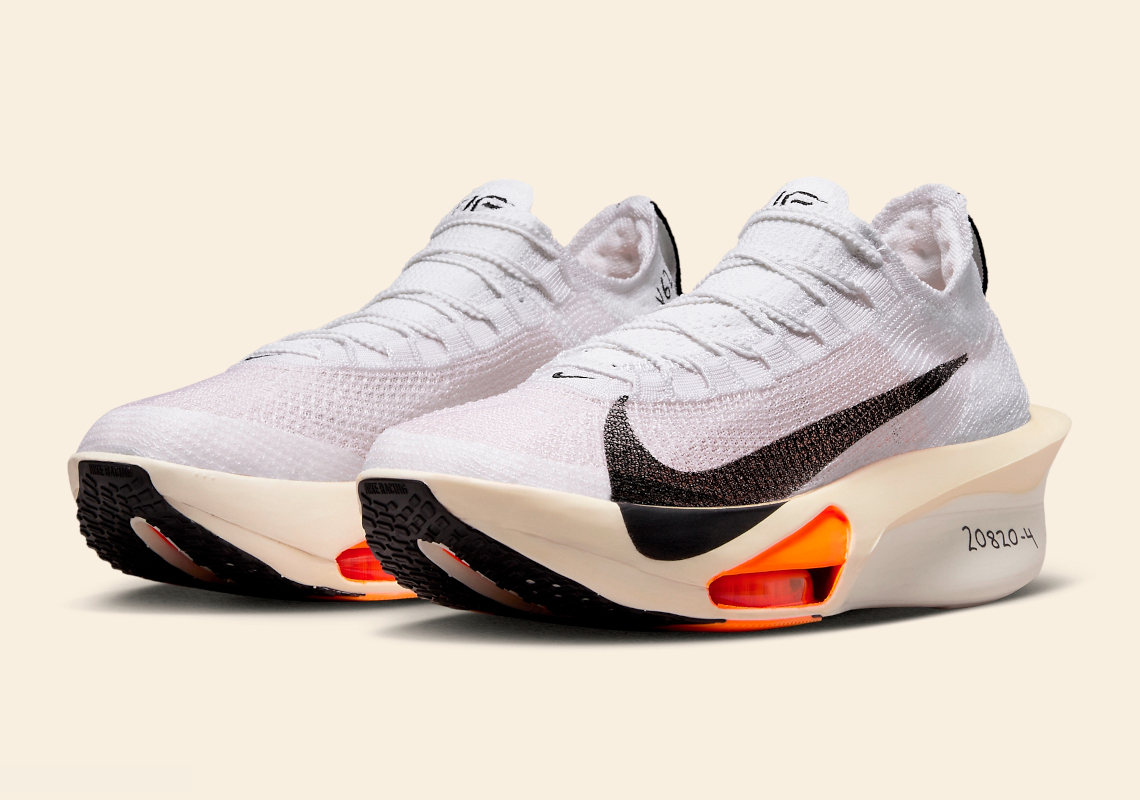
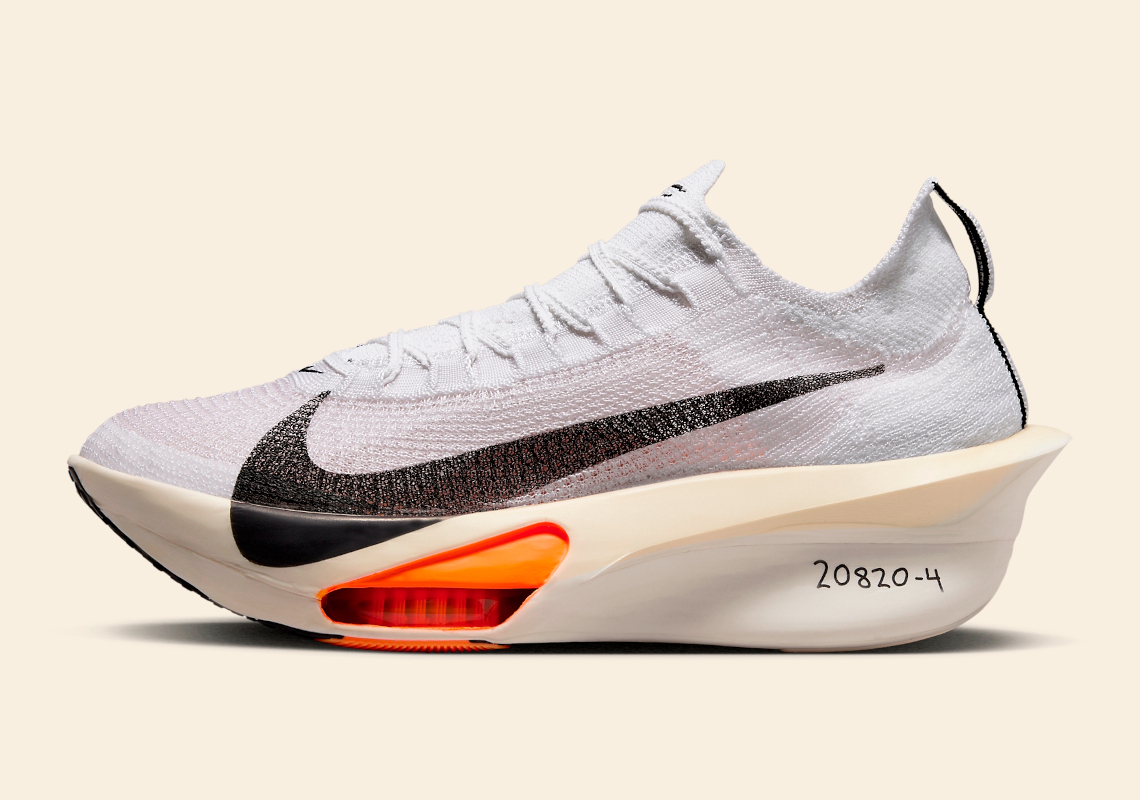
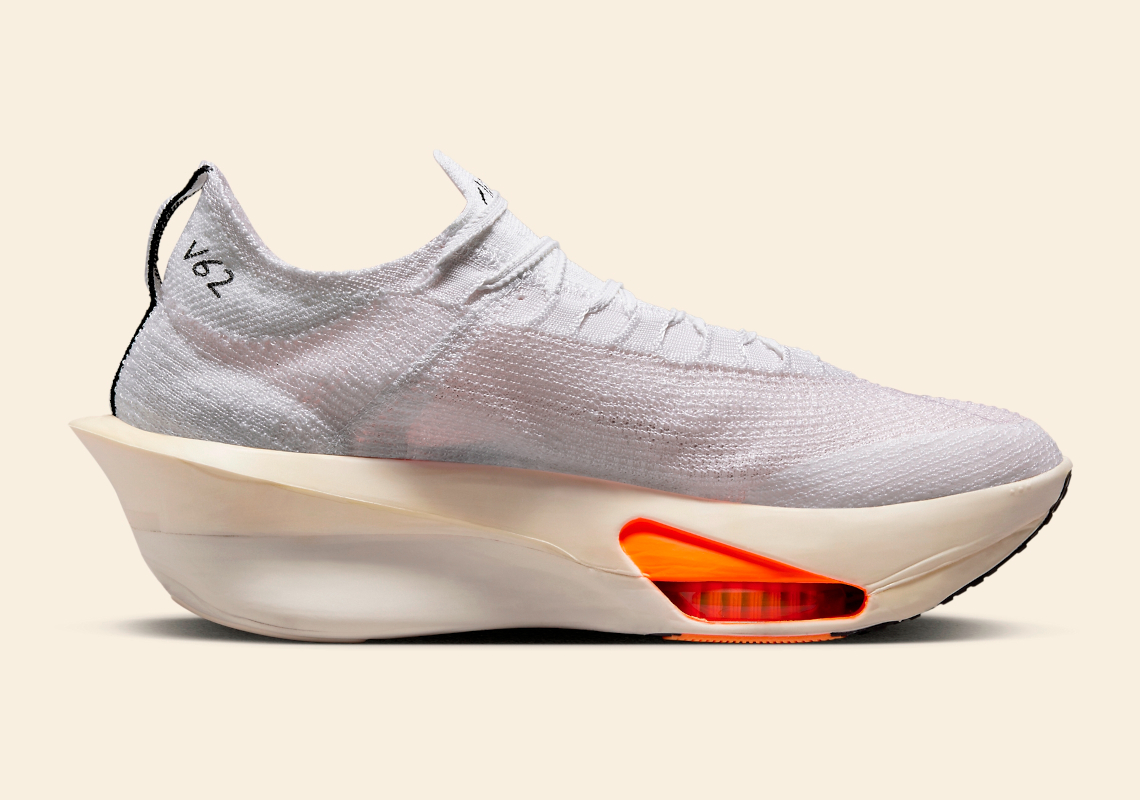
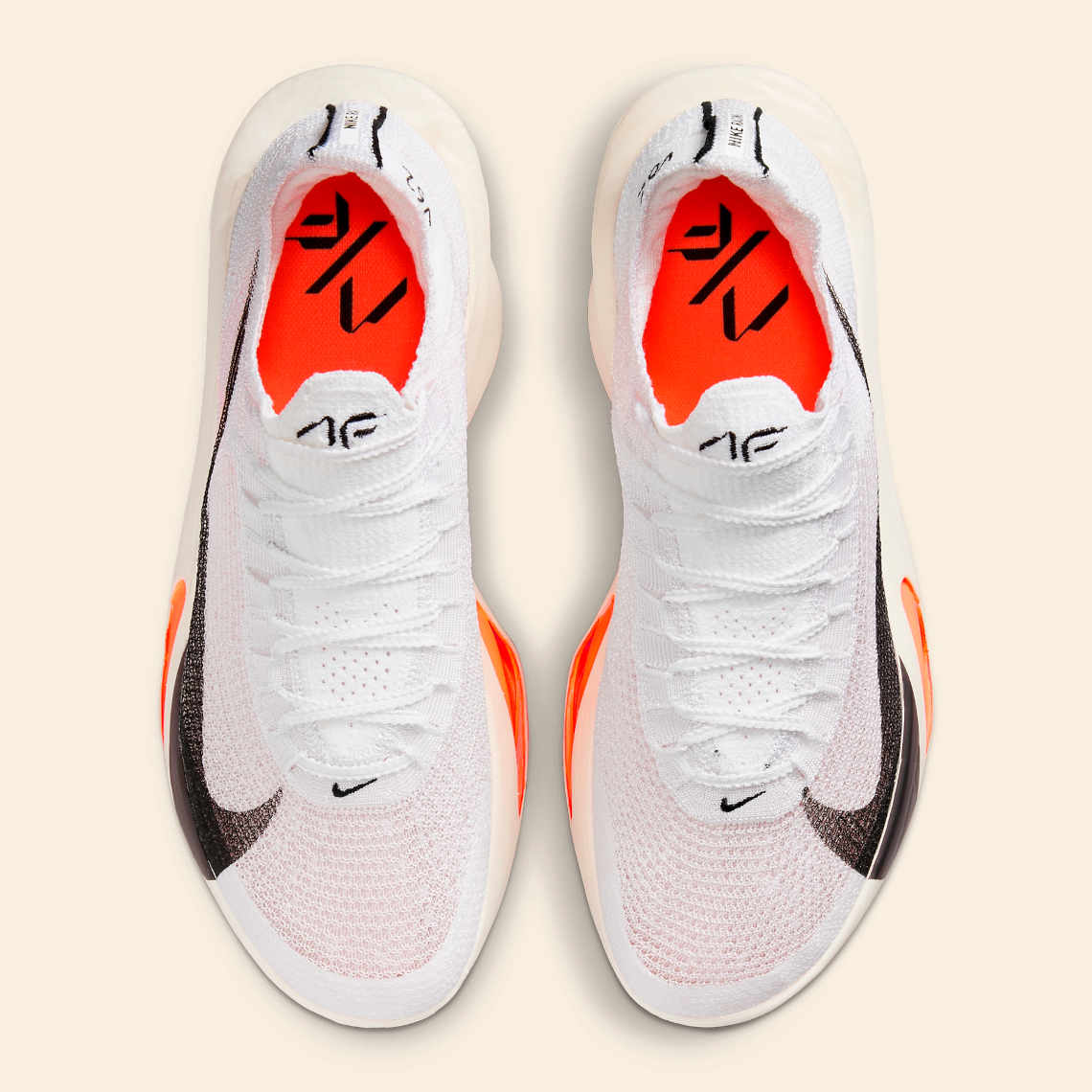
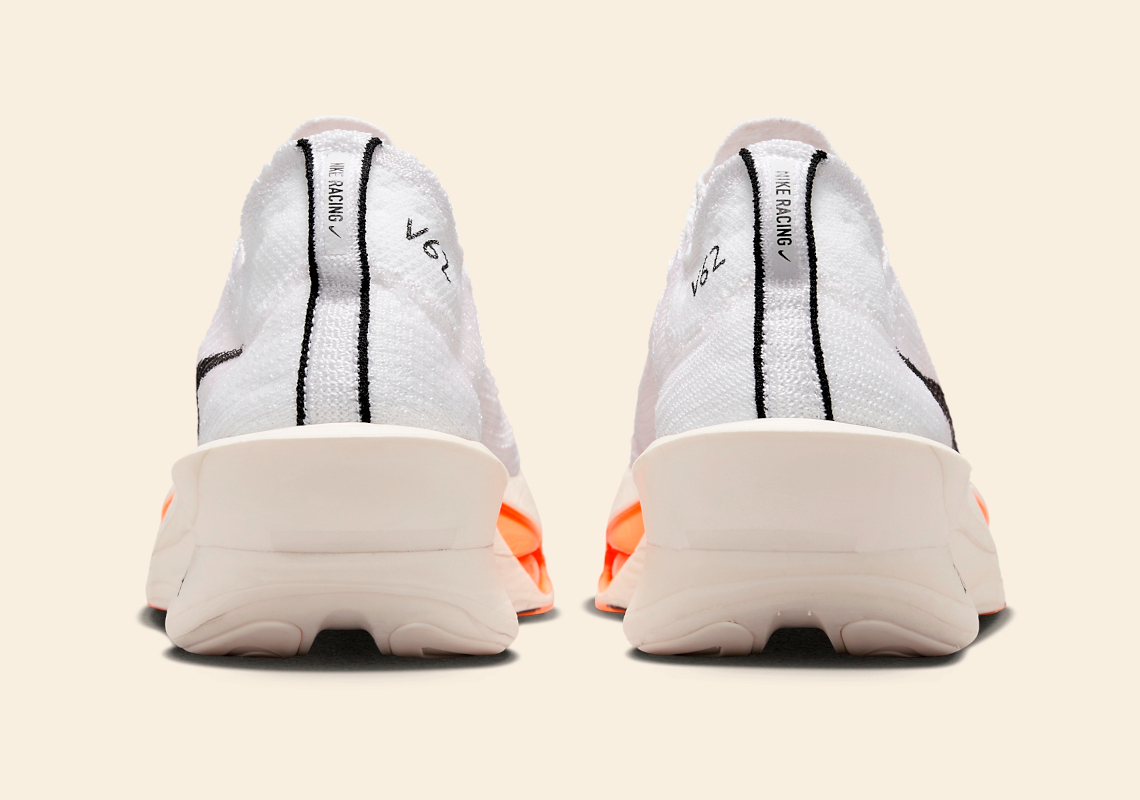
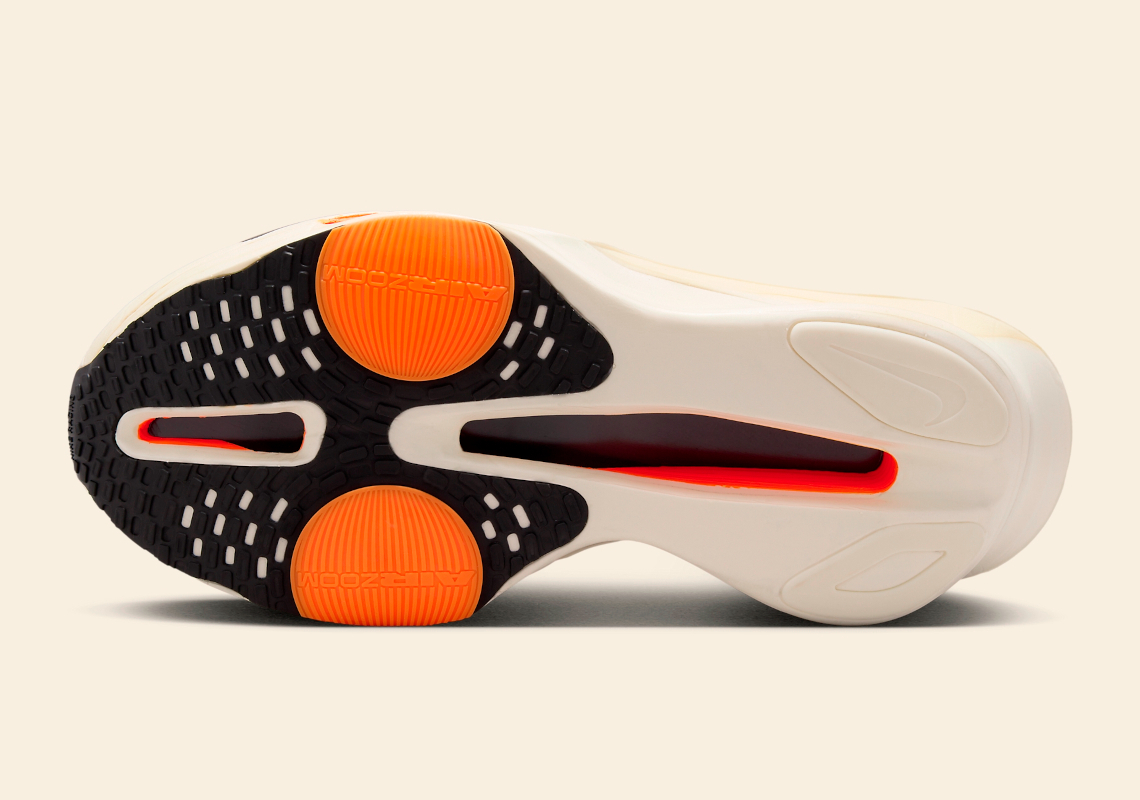
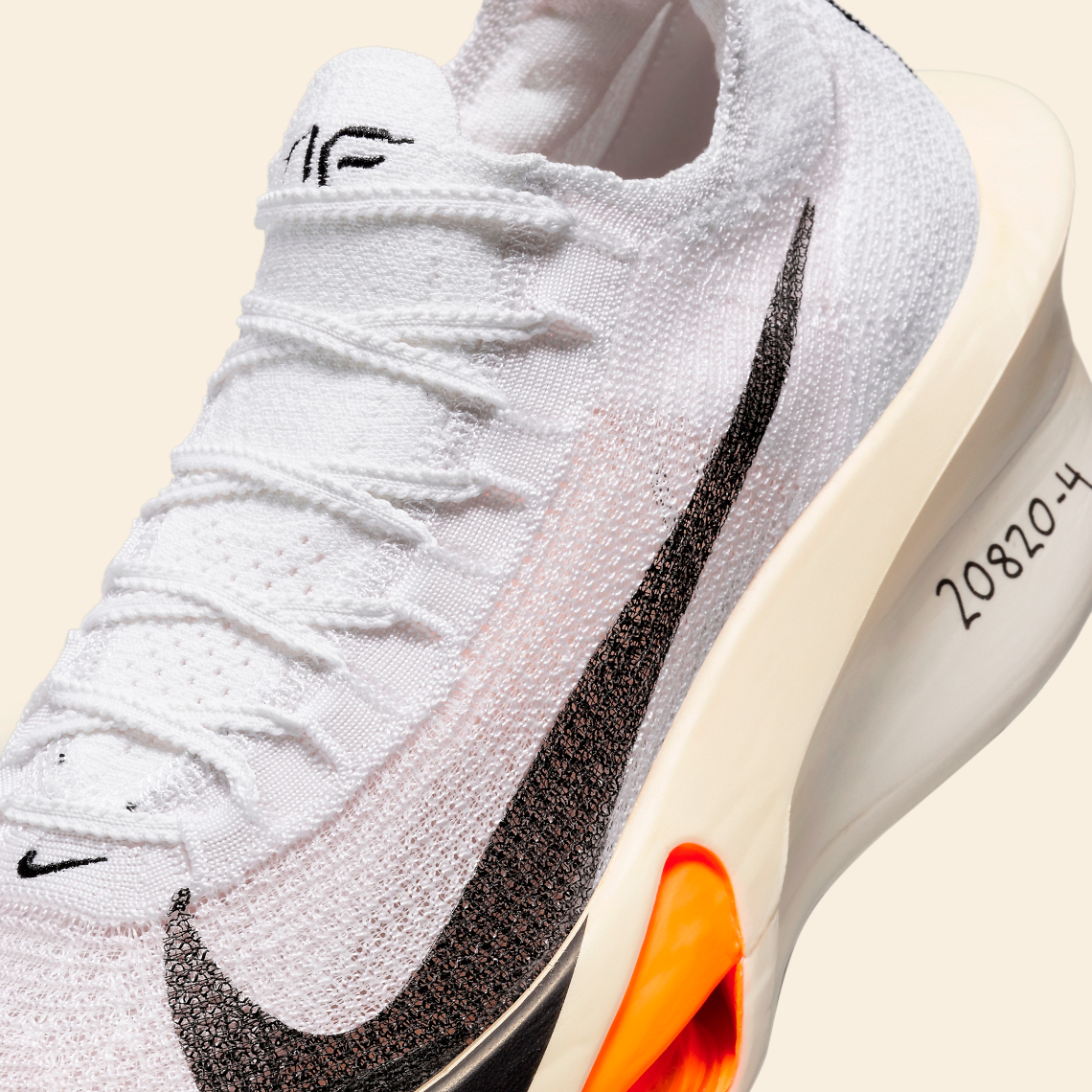
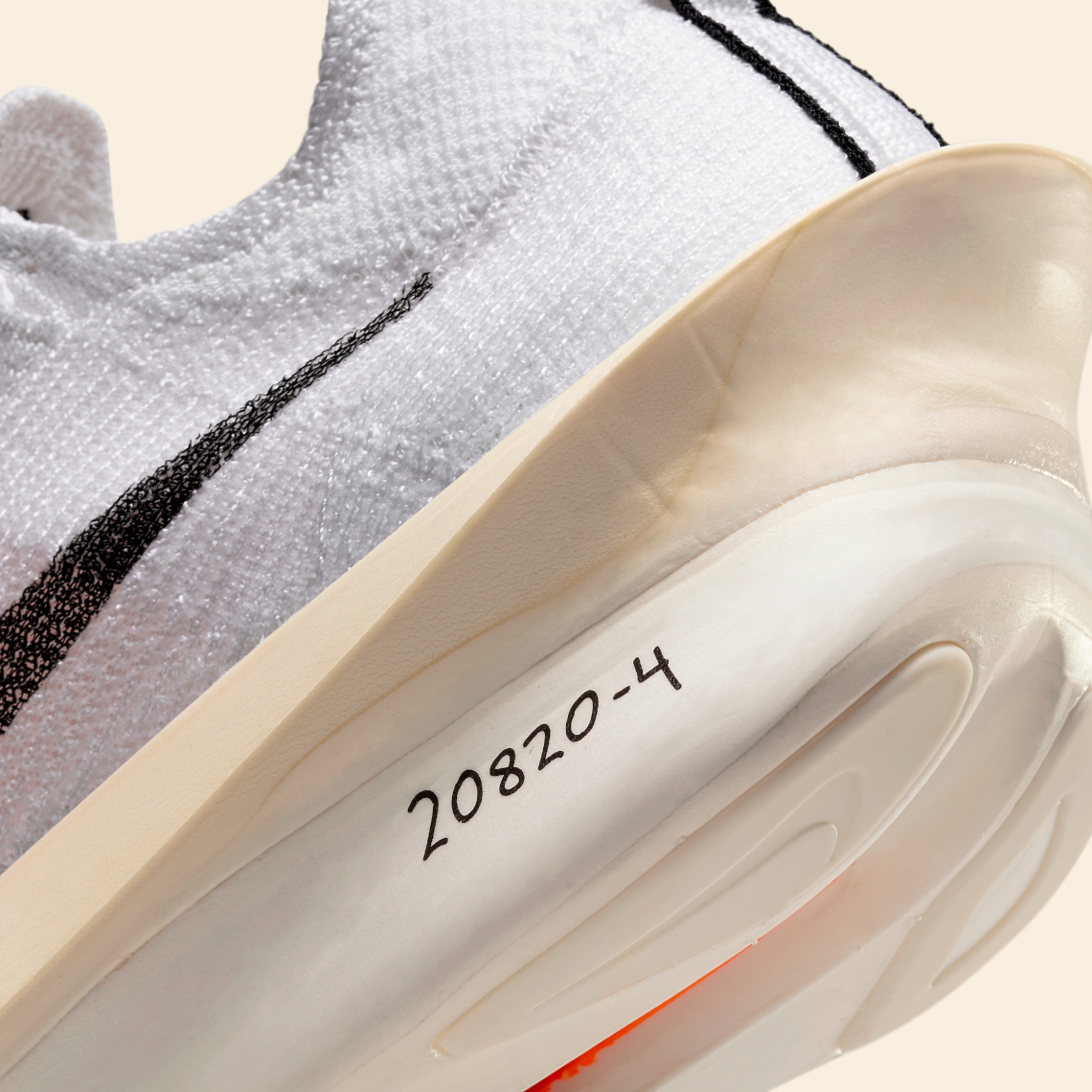

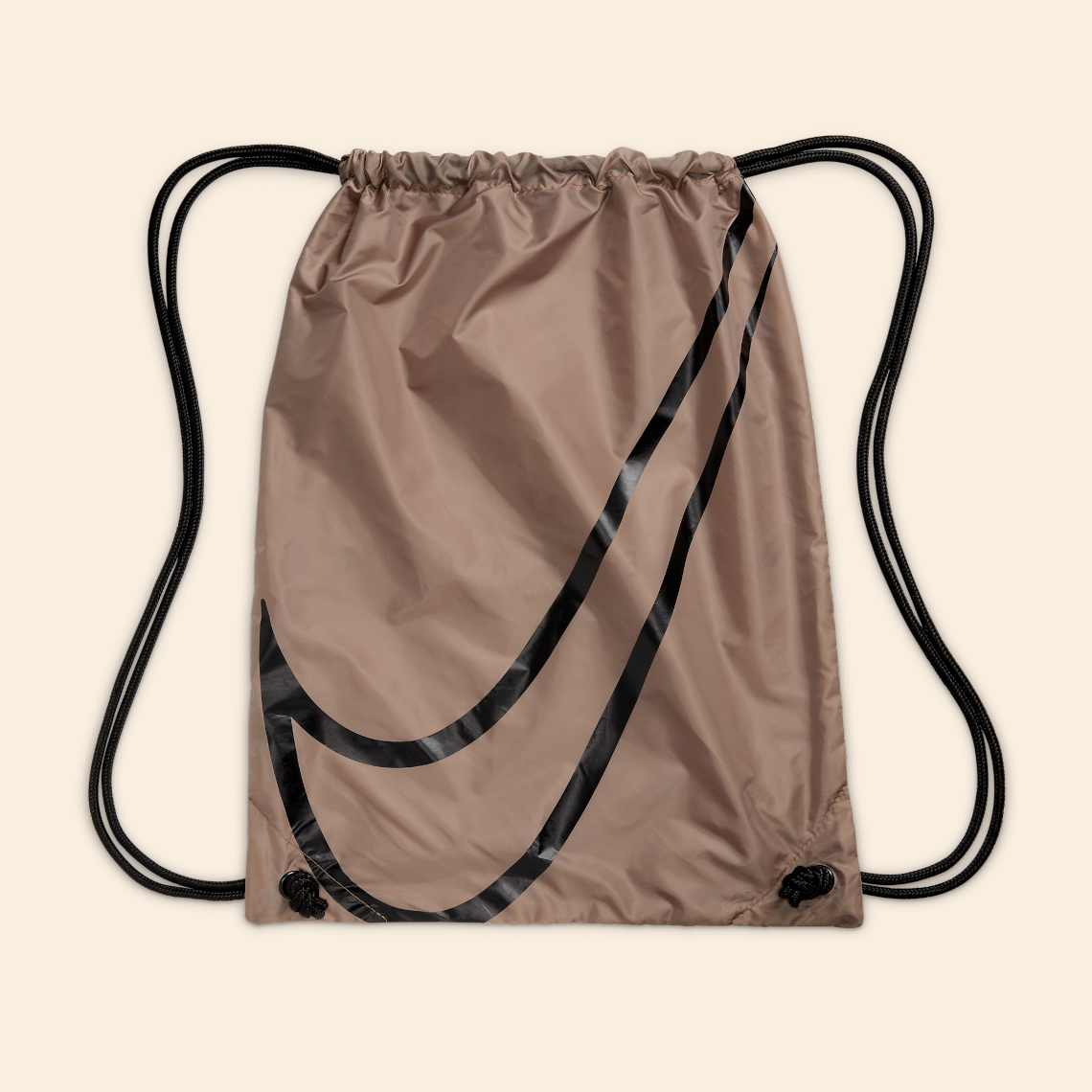
WHERE TO BUY
Nike ZoomX AlphaFly 3 "Prototype"
US 01/04/2024 Thursday
| Retailer | Release type | Status |
|---|---|---|
| Nikestore US | Sold Out | Sold Out |
| DICK'S | Sold Out | Sold Out |
If you’re reading this, it’s possible these words are your introduction to the Nike Alphafly 3. It’s also quite possible you caught wind of this shoe following Kelvin Kiptum’s world record-breaking performance at the Chicago Marathon in October. The shoe, however, has been in the making long before you clicked on this story.
While a bit hyperbolic, the Alphafly 3 was born before Nike was Nike. Bill Bowerman, legendary track coach and co-founder of Blue Ribbon Sports (the company that would ultimately transform into Nike), famously said, “A shoe must be three things. It must be light, comfortable, and it’s got to go the distance.” Although Bowerman shared these words long before a single Nike Alphafly existed, they apply perfectly to the Oregon-based brand’s latest marathon race shoe – so much so that the words are printed inside the shoebox of the Alphafly 3’s “Prototype” colorway.
Nike’s next “super shoe” is set to debut via nike.com, the Nike app, and select running speciality stores on January 4th, 2024. The Alphafly 3 is priced at $285 USD ($275 equivalent in all other Geos).
Continue ahead to read up on the shoe before its launch – including a brief history of Nike Running’s Alphafly series; innovative differences between previous versions and the Alphafly 3; technical specifications; an interview with Bret Schoolmeester, Senior Product Director for Nike Running Footwear; and an honest review of the model by Sneaker News’ resident runner (me).
History
At its core, Nike is a running company. Prior to 1972, the brand simply operated as an importer of running shoes from Japan. As the ’70s got going, however, Blue Ribbon Sports began producing its own footwear to cater to an American audience, outfitting Steve Prefontaine – the American medium-distance runner of the time – in swoosh-branded track spikes.
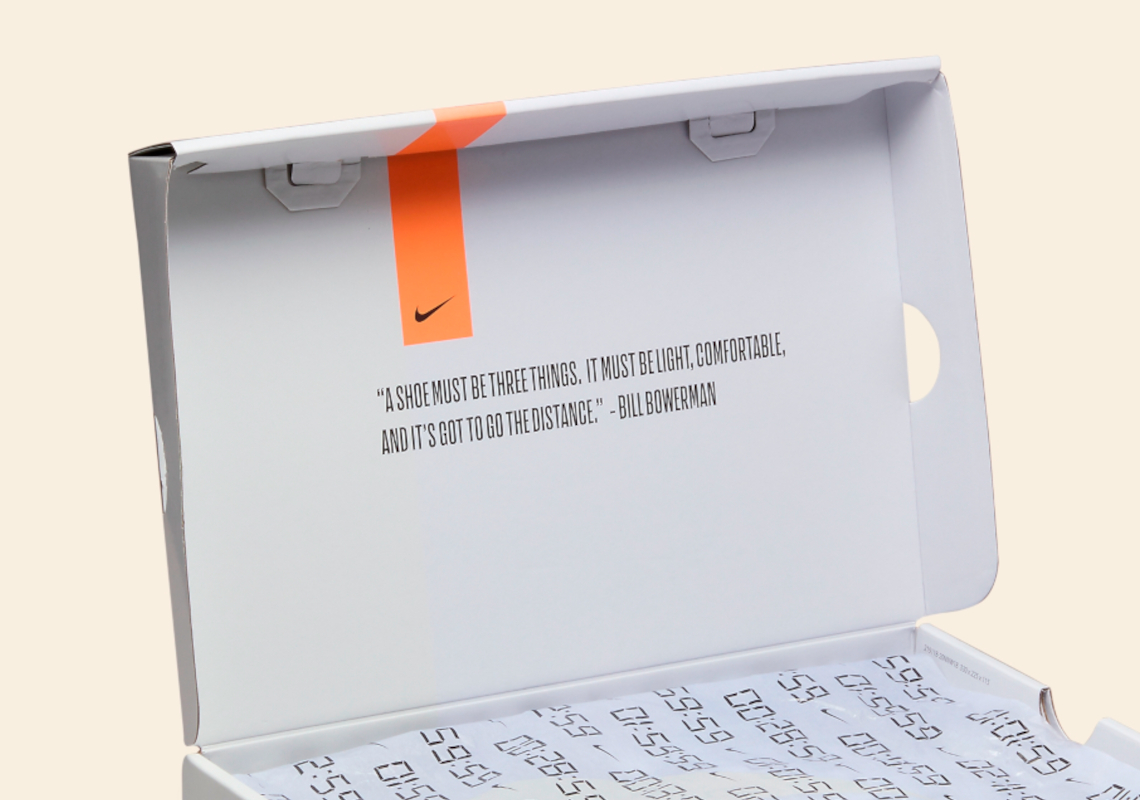
Fast-forward to November 2016, Nike began to chase a crazy idea with Kenyan athlete, Eliud Kipchoge. The “crazy idea?”: Break the 2-hour marathon barrier. To this end, the Oregon-based institution began developing special footwear that focused on Bowerman’s three principles for a Nike shoe: weight reduction, comfort, and durability. The 4% series was born as a result of Nike’s “crazy idea,” which later morphed into the NEXT% line. During a carefully-planned-and-executed event in Vienna on October 12th, 2019, Kipchoge finally broke the previously elusive 2-hour marathon mark; he ran 26.2 miles (42.1 kilometers) in 1:59:40.
The decorated marathoner was wearing a prototype of the Nike Alphafly NEXT%, a shoe that would change the sport of running forever.
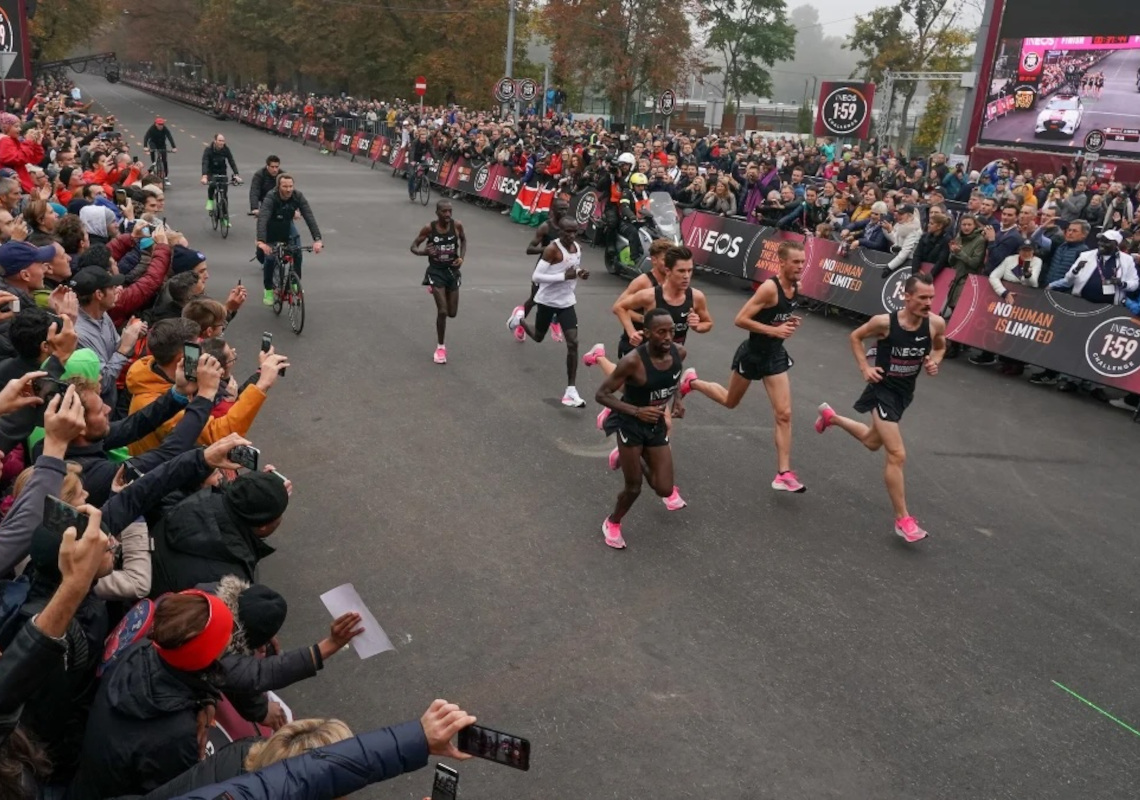
Shortly after Eliud Kipchoge’s feat, controversy arose around the shoe. Its high-stack height, unconventional shape, visible Zoom Air units, and carbon fiber plate raised questions about the role technology plays in athlete performances. World Athletics drafted new rules in the wake of the sub 2-hour marathon, determining guidelines for Nike’s – and soon, competitors’ – “super shoes,” a nascent footwear category that the first Alphafly and Vaporfly NEXT% helped birth.
One of the rules dictated by World Athletics states that shoe companies must make their racing footwear available for purchase on the open retail market at least one month prior to competition (unless the shoe has been approved as still in development). This regulation has allowed for everyday runners to enjoy the magic of Nike Running’s top-of-the-line innovation (more on that ahead).
What’s Different?
How do you improve upon what’s already proven to be the best? Nike’s team of designers, researchers, and runners were challenged with improving upon the Alphafly’s already-great proposition. As it has been time and time again, the Swoosh stepped up to the challenge, dissecting each component of its first two iterations with invaluable insight to their most important audience: athletes.
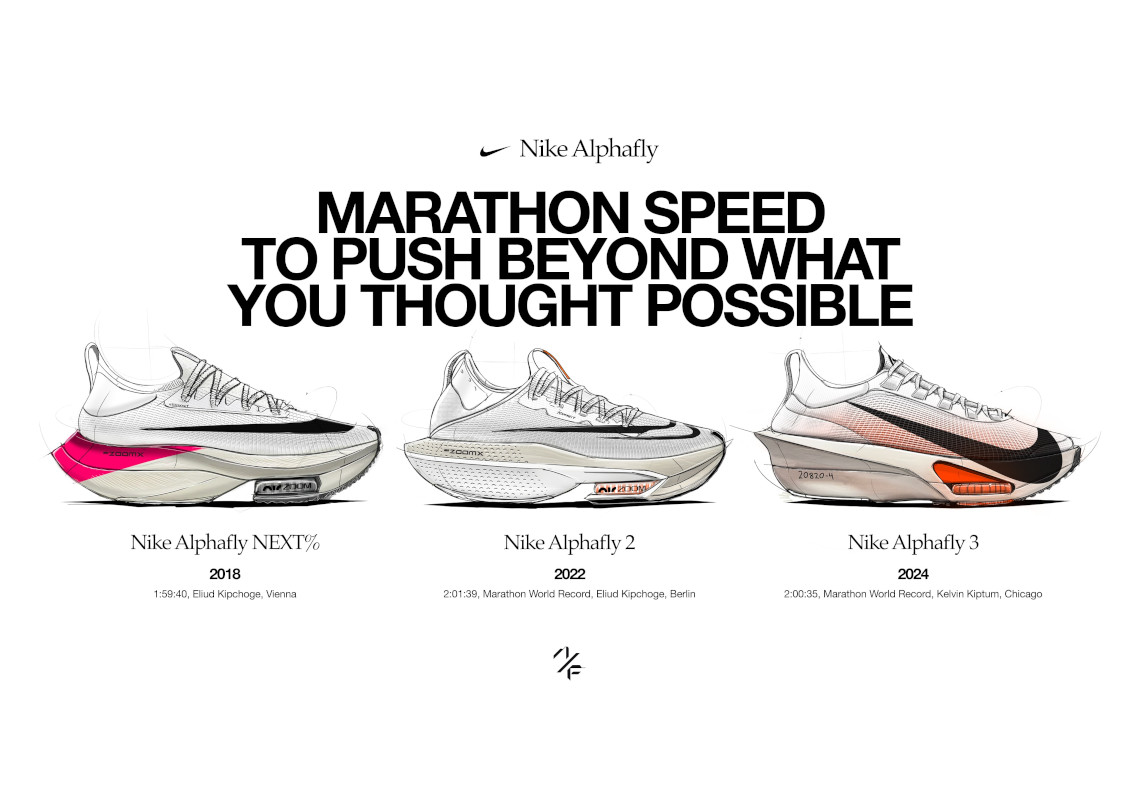
Another Bowermanism (there are many) is, “If you have a body, you are an athlete.” Therefore, all of Nike’s performance products are developed in close collaboration with athletes of all levels. For the Alphafly 3, the brand worked with more than 300 elite and everyday runners across Kenya, Ethiopia, Uganda, Western Europe, Japan, and the US to inform, test, and give feedback on the race shoe’s development. The result was over 20,000 miles (more than 32,000 kilometers) covered both in the Nike Sport Research Lab (NSRL) and on the roads – the most for any Nike Racing shoe. Ever. According to Schoolmeester, putting the shoe to the test was “highly-itentional”:the brand was conscious about its next Alphafly being able to meet runners at several starting lines throughout its lifecycle.
Women athletes were crucial to the development of the Nike Alphafly 3. In comparison to their male counterparts, women runners have been much more vocal about feedback. Within the context of Nike Running’s next marathon shoe, this insight helped bring softer yarns to the Atomknit 3.0 upper, improved arch support, and better toe protection. Ultimately, women’s feedback would benefit all.
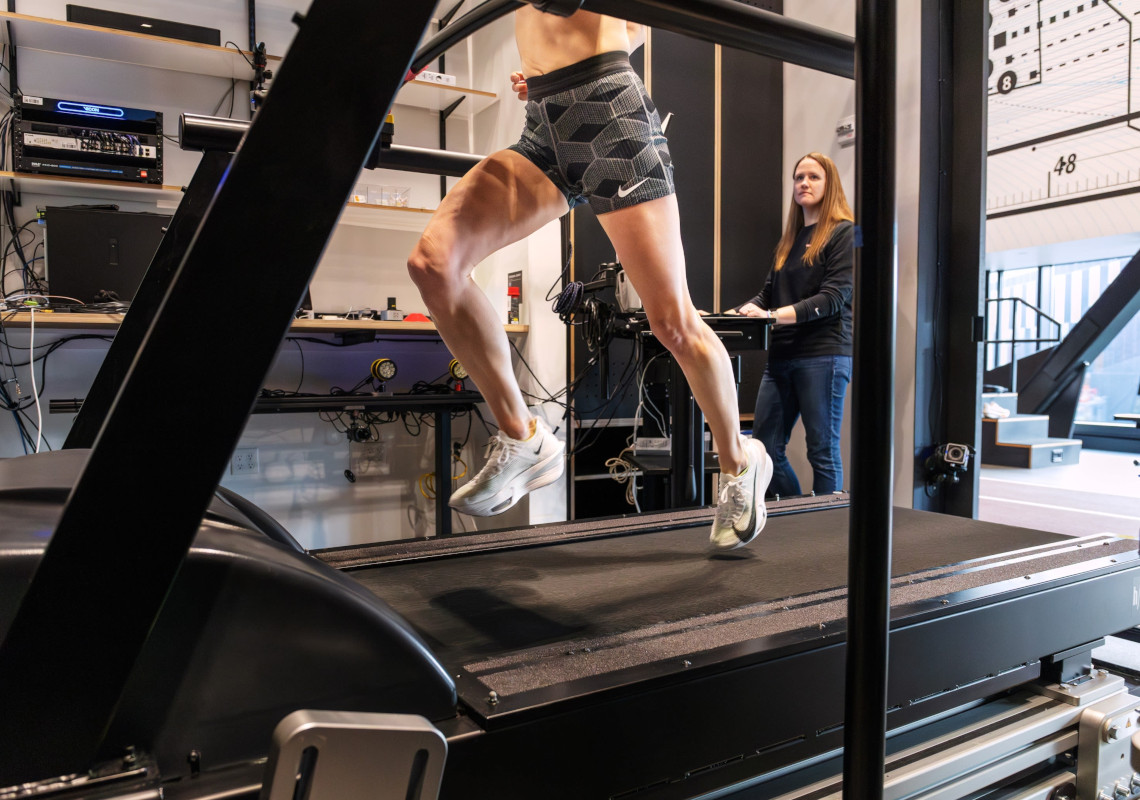
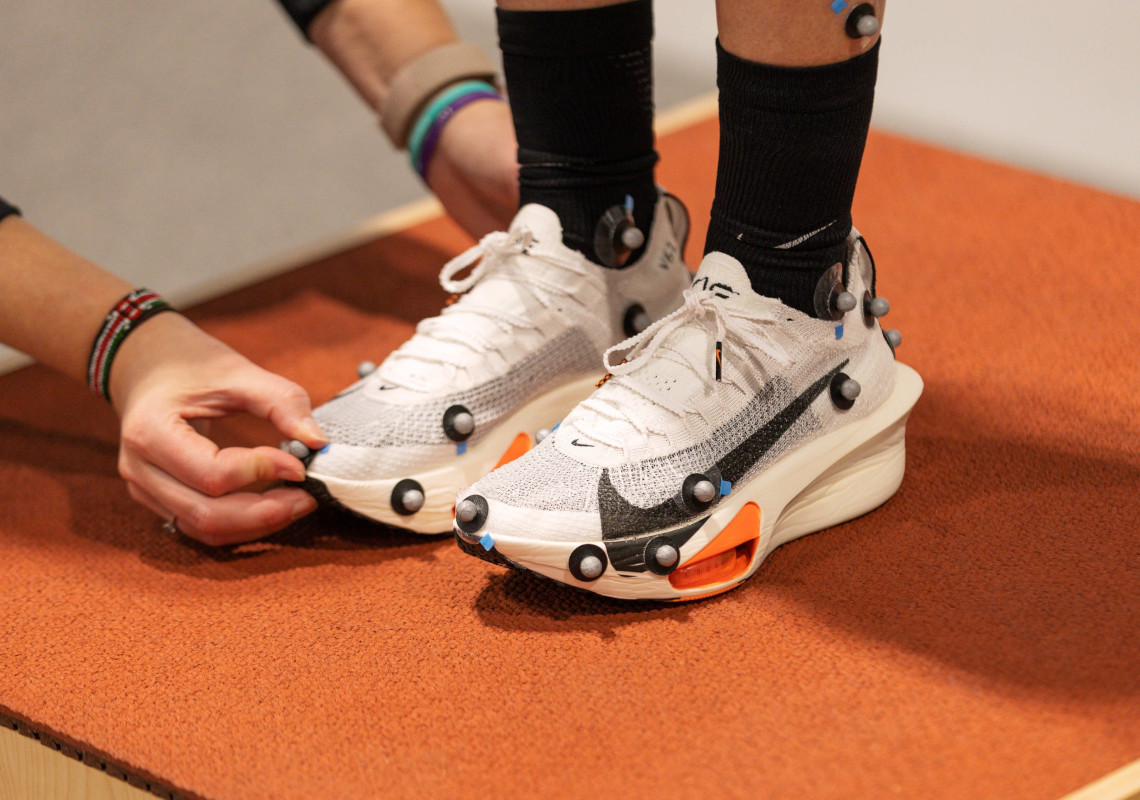
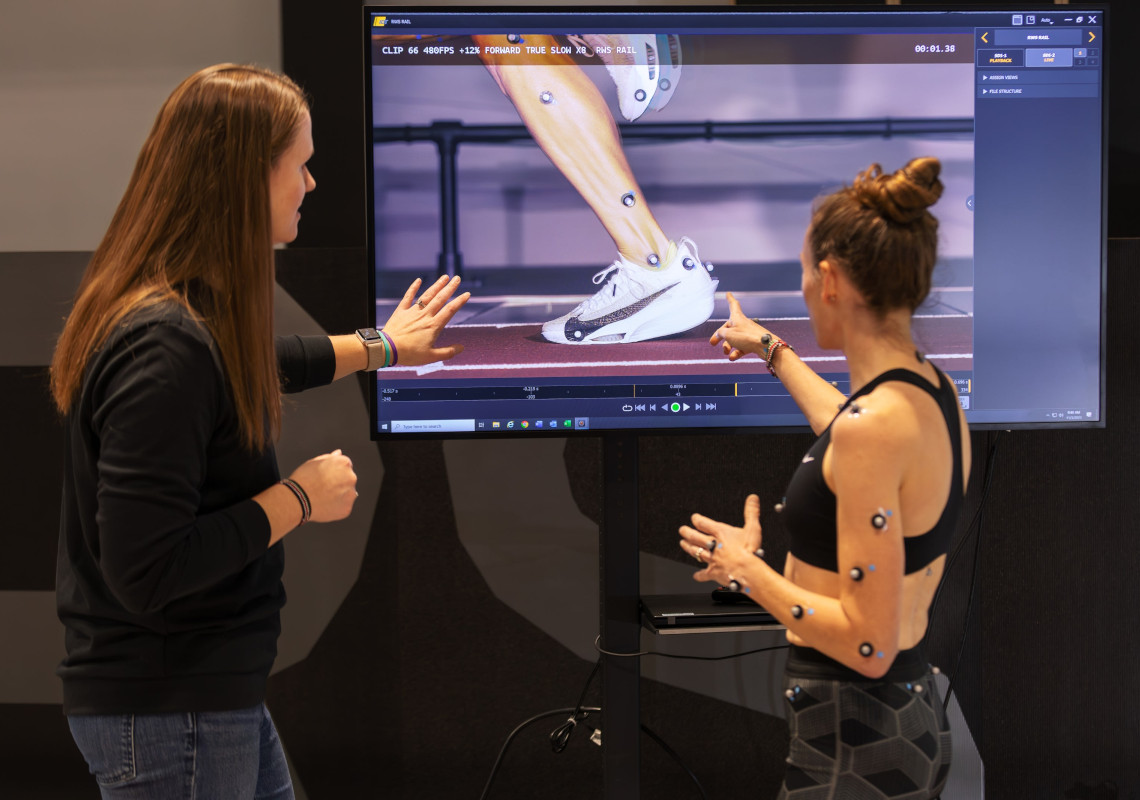
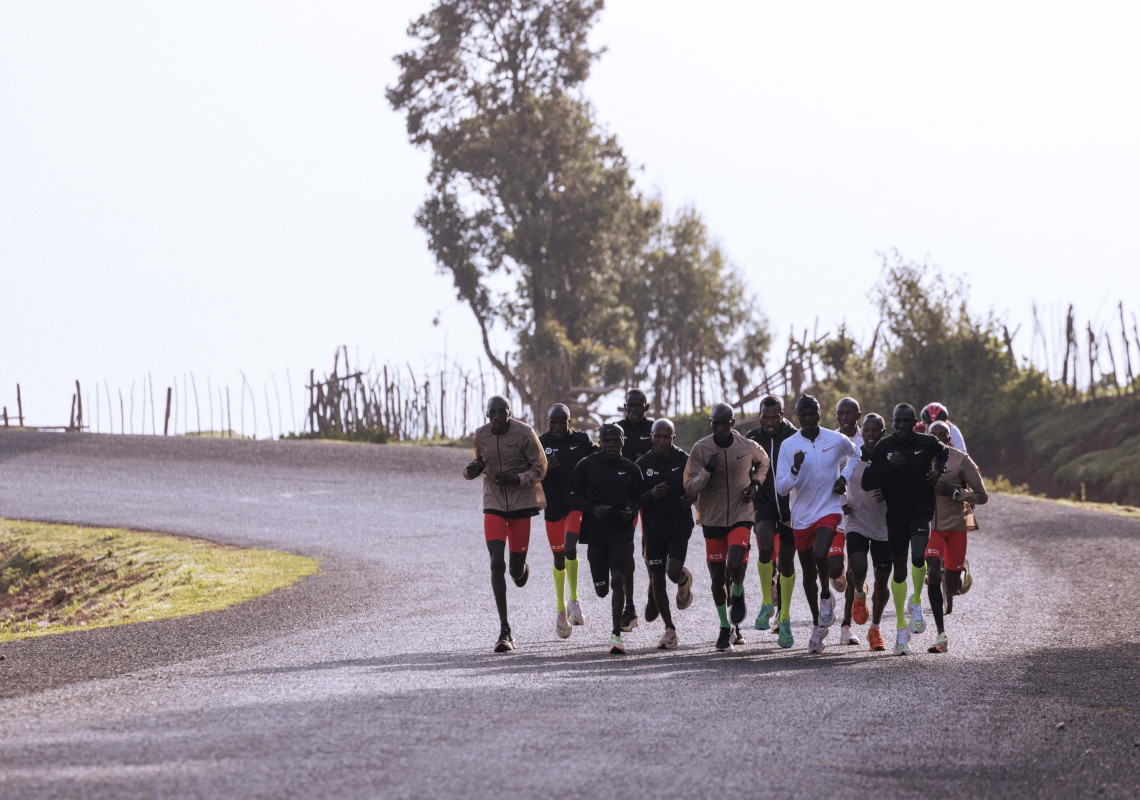
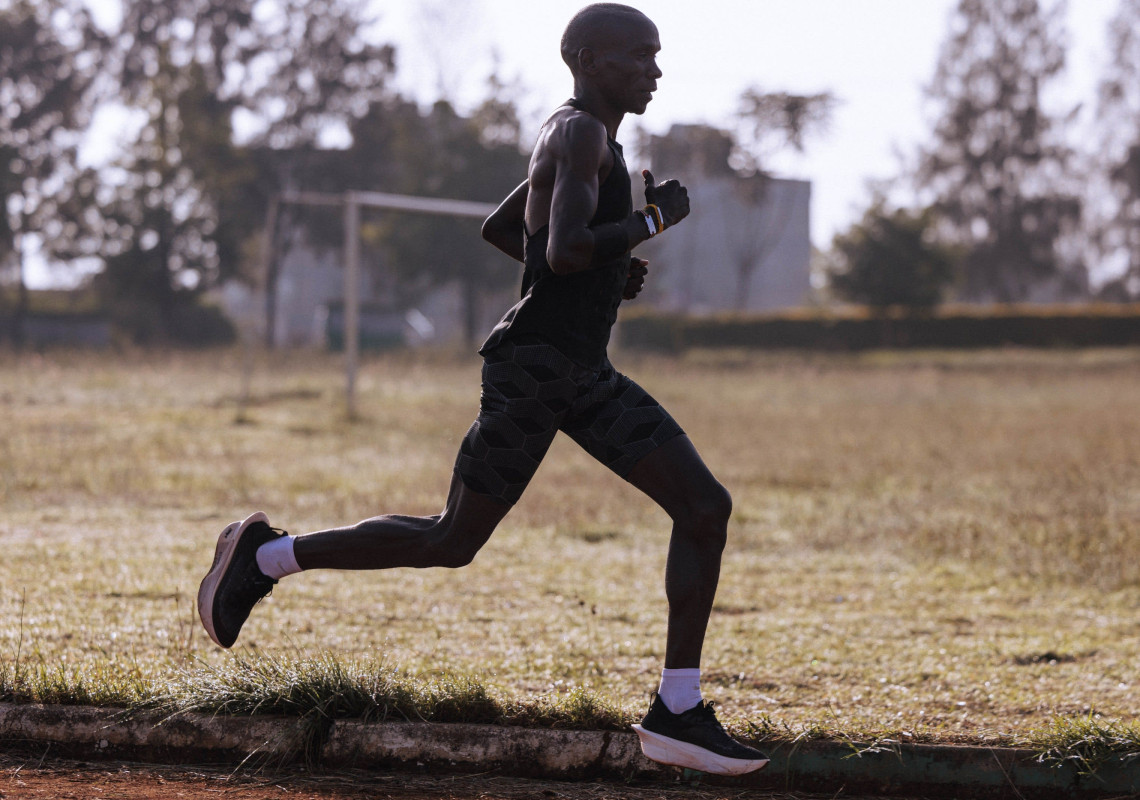
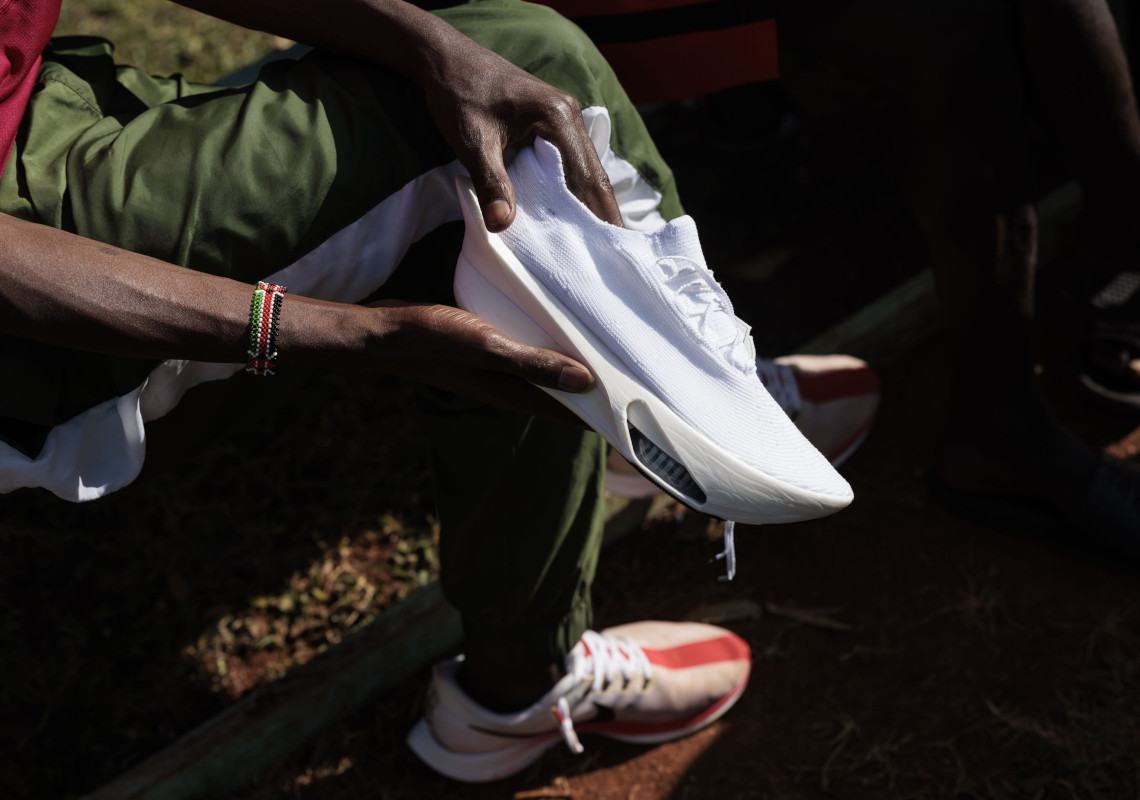
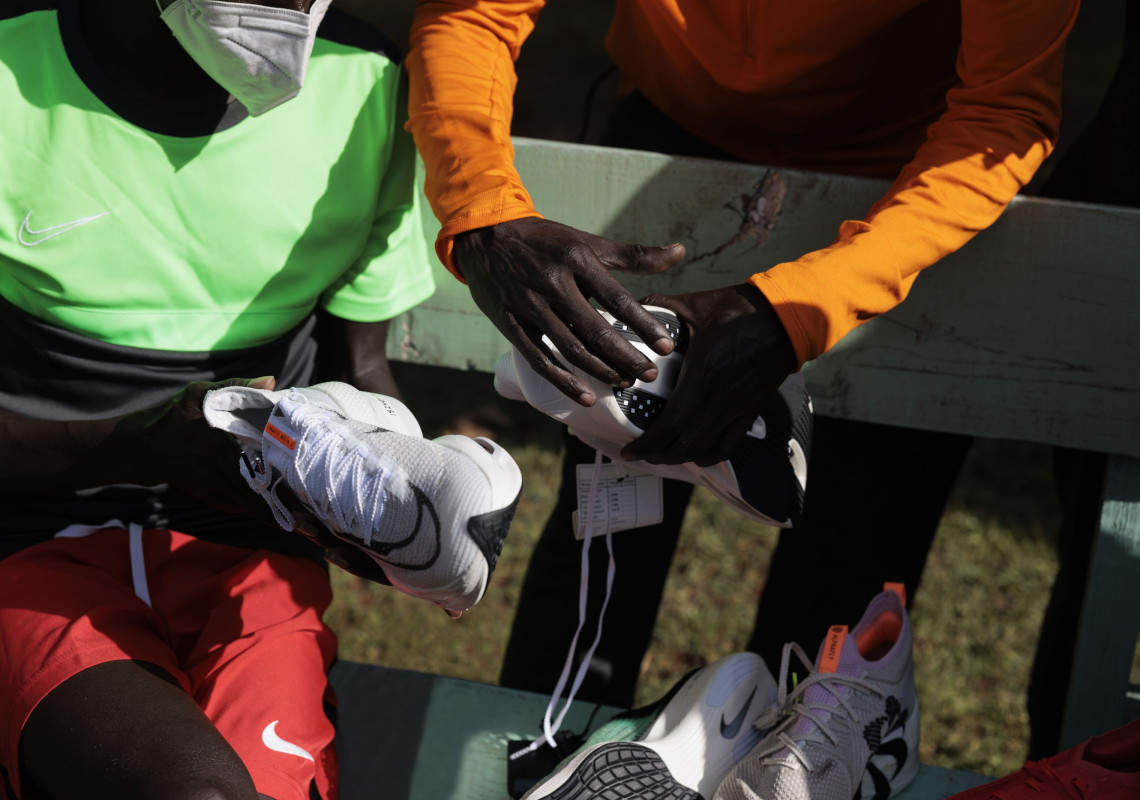

Nike’s “system of speed” remains the same within the shoe, but the recipe has been modified the optimize performance and comfort:
• The ZoomX midsole maintains its same height, but now exists as one continuous bottom connecting heel and forefoot. The change was informed by athlete feedback about transitioning from heel-to-toe more smoothly. The foam has also been sculpted to reduce weight and guide the foot strike.
• The midsole’s reductive redesign enables runners to concentrate the load on the forefoot Zoom Air bubbles. Furthermore, the visible Air technology is better protected than on the first two Alphaflys.
• The full-length carbon fiber Flyplate reprises its role, delivering the same stable, propulsive sensation that changed the running world forever. In the Alphafly 3, the plate has been widened on the medial midfoot, an update that promises better stability.
Other changes to the Alphafly 3 include:
• A new Fast Shot outsole ensures reliable traction and grip while reducing weight.
• A redesigned lacing system that integrates eye stays into the Flyknit upper to create a softer fit on the top of the foot.
• A new molded sockliner, last, and lofted Flyknit heel pods deliver improved comfort and support by reducing rubbing and accommodating the foot better.
• Atomknit 3.0 uppers offer breathability and containment in a lightweight package.
Tech Specs
The Nike Alphafly 3 is Nike’s lightest Alphafly to date. (I couldn’t believe it either until I got a pair in-hand and compared it to an Alphafly NEXT% 2.)
A Men’s 10 weighs 220 grams (7.7 ounces); the Alphafly 3 in a Women’s 8 comes in at 176g (6.2oz). (Insane for a recording-breaking marathon shoe!)
The stack height in a Men’s 10 is just under 40 millimeters, the regulation set by World Athletics. (Additional stack height information has not been disclosed by Nike.) The shoe features an 8mm drop from heel to forefoot.
A Winner Already
Throughout the shoe’s 12-month World Athletics development cycle (December 2022 – December 2023), the Alphafly 3 (“Dev 163”) found itself on the feet of some of the world’s best marathoners – including Conner Mantz (Houston Half Marathon), Suguru Osaka (Tokyo Marathon), and Nell Rojas (Boston Marathoners).
It wasn’t until Ethiopian-born Dutch runner, Sifan Hassan, placed first amongst women at the London Marathon that Nike’s third Alphafly won a World Marathon Major (there are six).
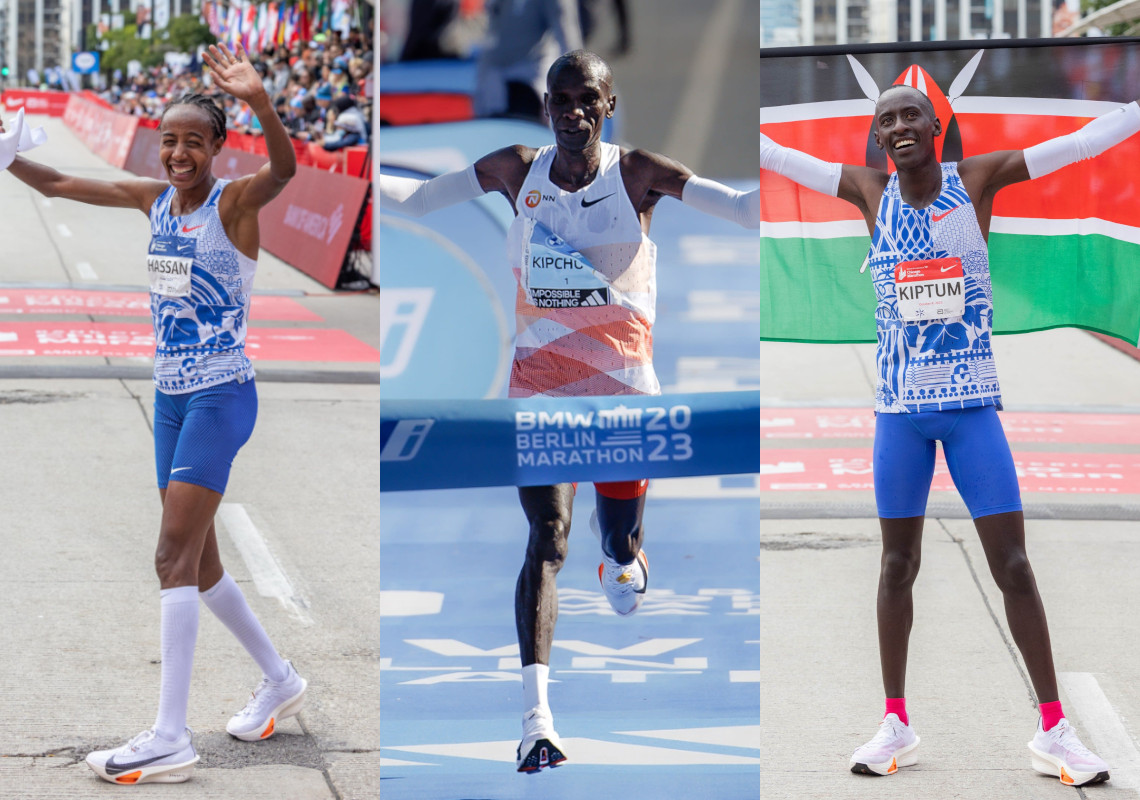
Eliud Kipchoge – the original poster person for “super shoes” – didn’t race in Dev 163 until September’s Berlin Marathon. The Kenyan athlete won the race, delivering another Top 10 Fastest Marathon Performances in the process.
The Alphafly 3, however, made history on October 8th, 2023 in Chicago. In only his third marathon race ever, 23-year-old Kelvin Kiptum broke the world marathon record previously set by Kipchoge with a time of 2:00:35. Previous races saw Kiptum run in the Vaporfly NEXT% 2, and run fast, but he’s been quoted as having said that since he tried on the Alphafly 3 for the first time, he said “this is it.” High praise from the current marathon world record holder.
A Peek Behind The Curtain
I connected with Bret Schoolmeester, Senior Product Director for Nike Running Footwear, via Zoom on Monday, November 20th. Over the course of 30 minutes, Schoolmeester – a lifelong runner, former professional distance runner, and Nike member since 2007 – shared some insight behind the Alphafly 3’s biggest changes from its predecessors; spoke about the possibility of an “unhinged” Nike Running shoe; and emphasized the importance of women testers in the development of the model.
Excerpts from our conversation have been edited for length and clarity.
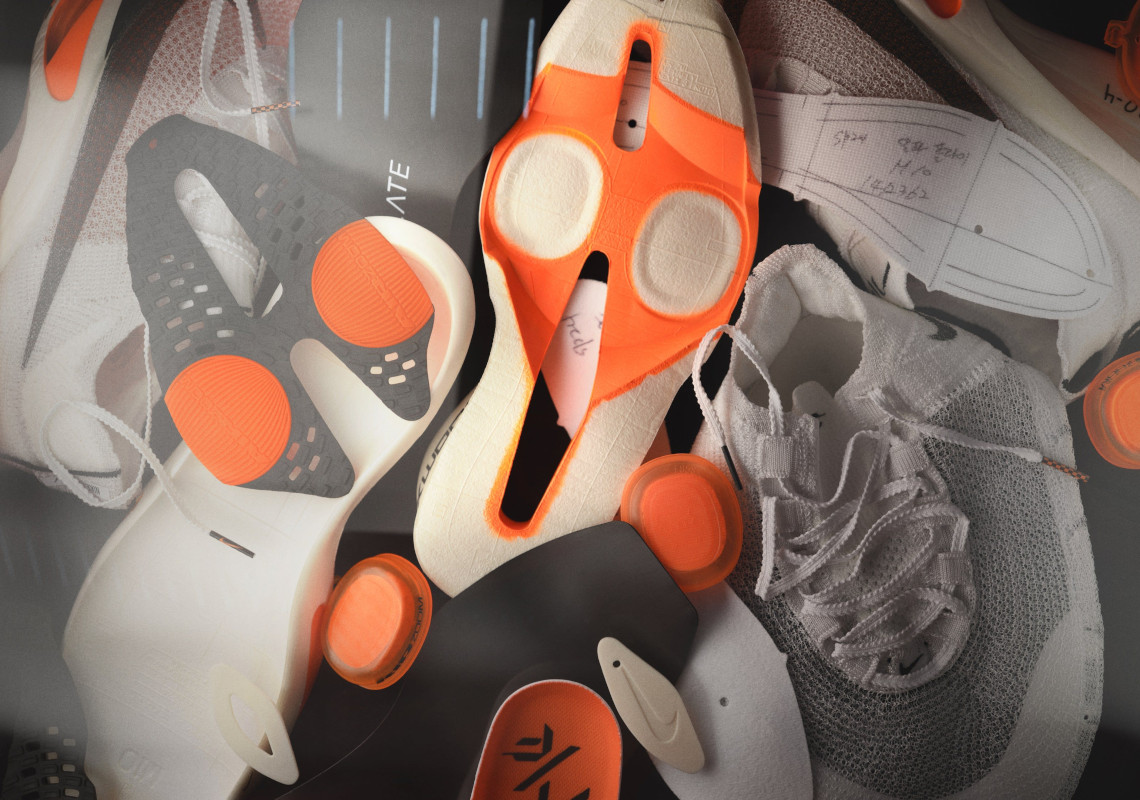
Sneaker News: What was the intention behind the Alphafly 3?
Bret Schoolmeester: We started the “super shoe” era…everybody’s kind of been trying to catch up ever since. [The original Vaporfly] created a new space to say, “How do we go pushing even more edges for the marathon specifically?” And that was the Alphafly…”How do we help athletes do crazy things?”
As we look throughout marathon fields, we’ve been seeing more of a mix of Vaporfly and Alphafly. And so we’ve had to do some introspection and talk to a lot of runners [about what was preventing them from wearing the Alphafly for marathons].
For us, our process always starts with listening to athletes. So, we know there are certain mechanical or biomechanical things that we want to improve in the shoe, but if it doesn’t match up with runners’ feedback and their responses, it doesn’t matter. What were their issues?: It was transition, comfort, stability.
How does the [AF]3 keep its pep while still delivering stability and easier transition from heel to toe?
We’ve really been monitoring how we process and design the [ZoomX] foam. The proportions and compression ratio of ZoomX’s pre-form (before compression) is something we’ve really been dialing in, starting with the Vaporfly 3. [We want to] minimize weight and make sure that it has the right soft feeling. The other [way] is optimizing the system – where the bag, Air pods sit – to make sure that runners are getting the right level of compression and return.
Are there any plans to take a page out of competitors’ books and create a shoe unconstrained by World Athletics’ limitations?
Uhh, T.B.D. We’ve actually pioneered that space, so I wouldn’t say its a mimicry, but I do think continuing to push the edges and push the boundaries of what we can do for athletes has always been in our DNA and always will be.
Could this shoe have gotten to the point that it did without women’s input?
I don’t think so. Women were absolutely critical in getting the shoe to were it was. I think Alphafly is a bit of a microcosm for what we’re seeing throughout our creation process – and actually have seen for quite some time: Women runners tend to give us more vocal and articulate feedback on how we can be better. And that’s not to say that they want different things than our male runners, they just are better at telling us and holding us to a higher standard. When we deliver on those benefits, all runners tend to benefit.
An Honest Review
I am far from an elite runner. But I do run.
Since 2020, I’ve logged 1,035 miles (1665.7 kilometers) in the Nike Run Club app (376 Runs, 10’36” Average Pace, 183:01:07 Time spent engaged). This year has been a year of running for me as I’ve recorded 569.6 miles (916.7 kilometers) since the end of January. I also competed in several races – including the Mexico City Marathon, which I’m dying to redo in the Alphafly 3.
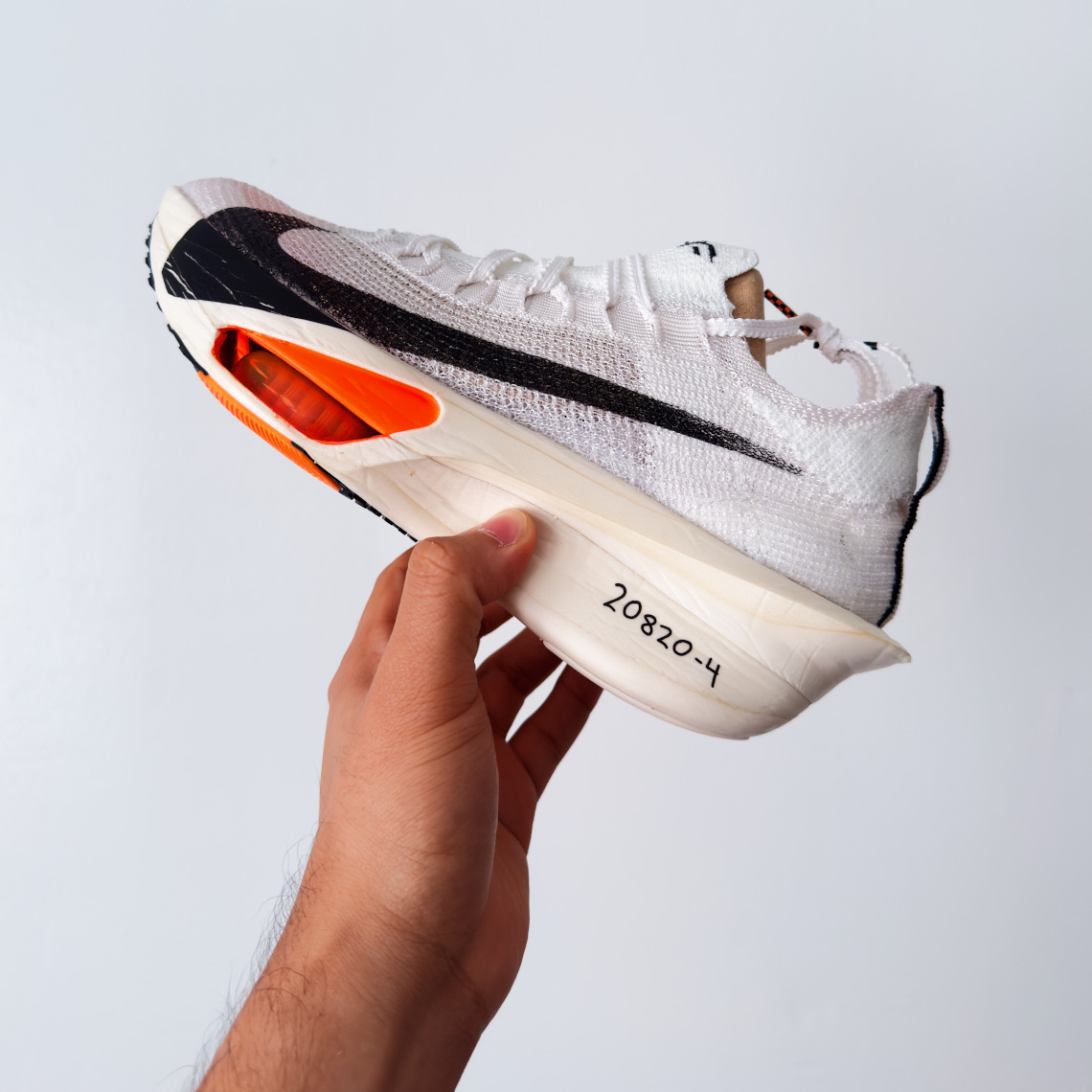
By all accounts, I am between an average and below-average 29-year-old male runner. Upon getting the chance to try out Nike’s third Alphafly (my first), I was excited and skeptical: Could I truly benefit from Nike Running’s top-of-the-line race shoe? But look at the colorway! How am I going to build up my base fitness again if this shoe is for going fast?
When I spoke to Bret over Zoom, he assured me that the Alphafly 3 would prove equally-beneficial – if not more – to common folks like me. And after logging 9.4 miles (15.1 kilometers) over the course of two runs in New York City’s cold weather, I think Bret was right.
I can’t emphasize how light the Alphafly 3 feels both in-hand and on-feet. My experience with marathon running shoes isn’t very extensive, but the pair stands out enough. The knit upper is extremely airy and comfortable. Visually, the eyestay layout along the tongue is off-putting to me, but the design certainly distributes weight evenly at the top of my feet. During my longest single run in the Alphafly 3 (6.27 miles), I didn’t notice any pressure in this area, a welcomed achievement that’s gotten me eager to see how I feel over longer distances. My feet are regular – not narrow nor wide – and I found the shoes to fit comfortably in my usual Nike size. Padding at the heel was a refreshing addition given how popular thin heels have become in the search for weight-reduction. The pull tab at the rearfoot helped put the shoe on without any issues, which seems to be a big improvement from its predecessors.
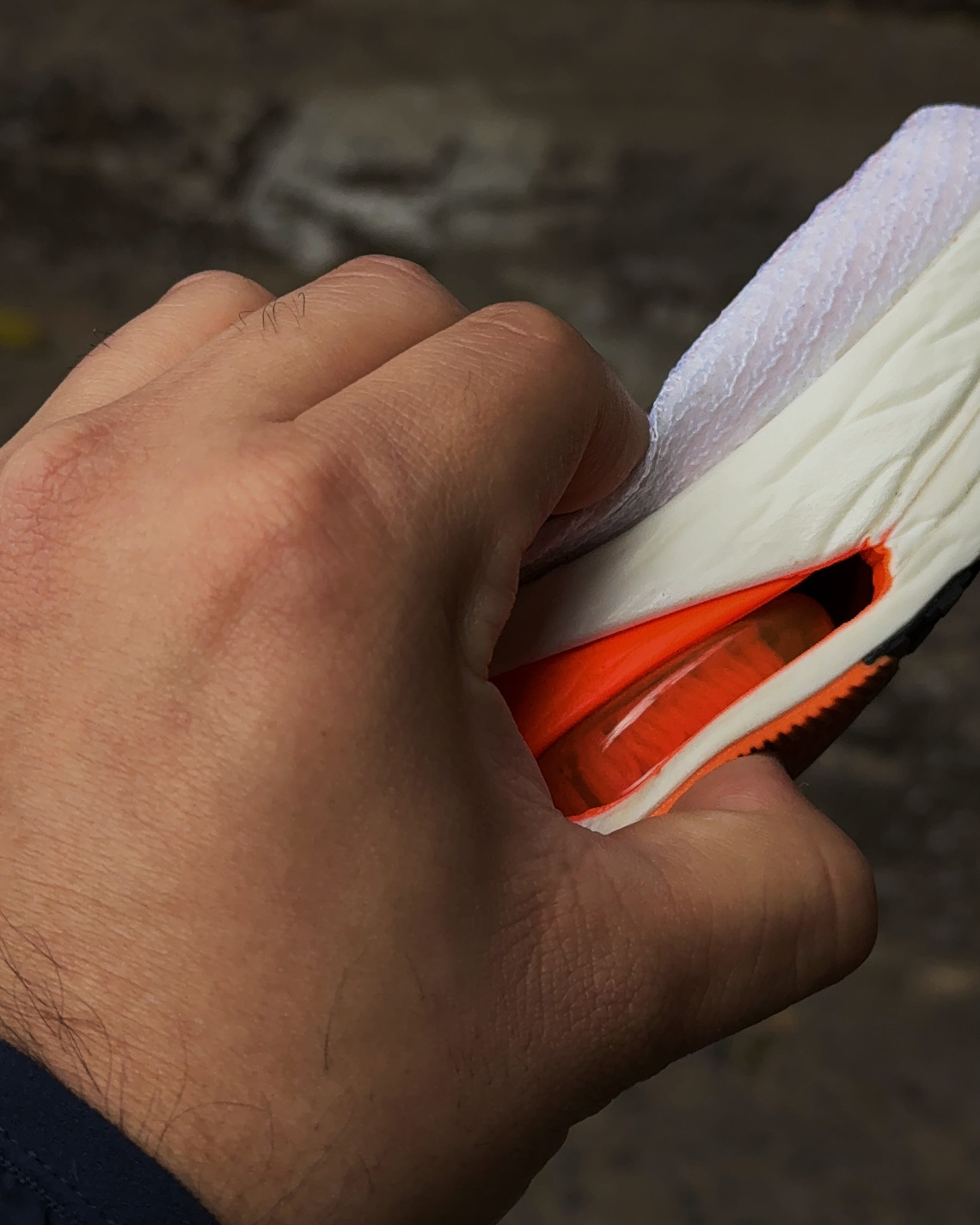
Having run in the Vaporfly NEXT% 2, Vaporfly 3, and Invincible 3, I’ve experienced ZoomX foam before. Thus, stepping into the Alphafly 3 didn’t feel as immediately revolutionary as my first time (the VF2 in 2021). But because I had an idea of what the midsole’s foam component felt like, I was more intrigued by the dual Zoom Air units at the forefoot. So stepped with force while trying them on in front of the mirror in my brother, Aldair’s, room. I didn’t bounce off the ground, but did feel a substantial spring underneath.
My first test run started out easy. I didn’t know how far I wanted to go in near-freezing temperatures, but I did want to get an idea of what the Alphafly 3 felt with tired legs and at faster paces. After about 20 minutes, I ventured into my current 170+ Heart Rate pace, trying to experience some of the fun I’d seen Sifan Hassan, Eliud Kipchoge, and Kelvin Kiptum indulge in throughout the year. The intriguing underfoot sensation I had felt at home less than 30 minutes before had become a full-out joy. I don’t have footage of my foot strike in the AF3, but I knew the Airbags were compressing as I landed, and adding a pep to my step in the process. The shoe particularly performed like a star while running uphill. Stepping precisely onto the Zoom Air system made Mosholu Parkway in the Bronx feel easy; I knew my heart was beating faster, but it didn’t feel like it.
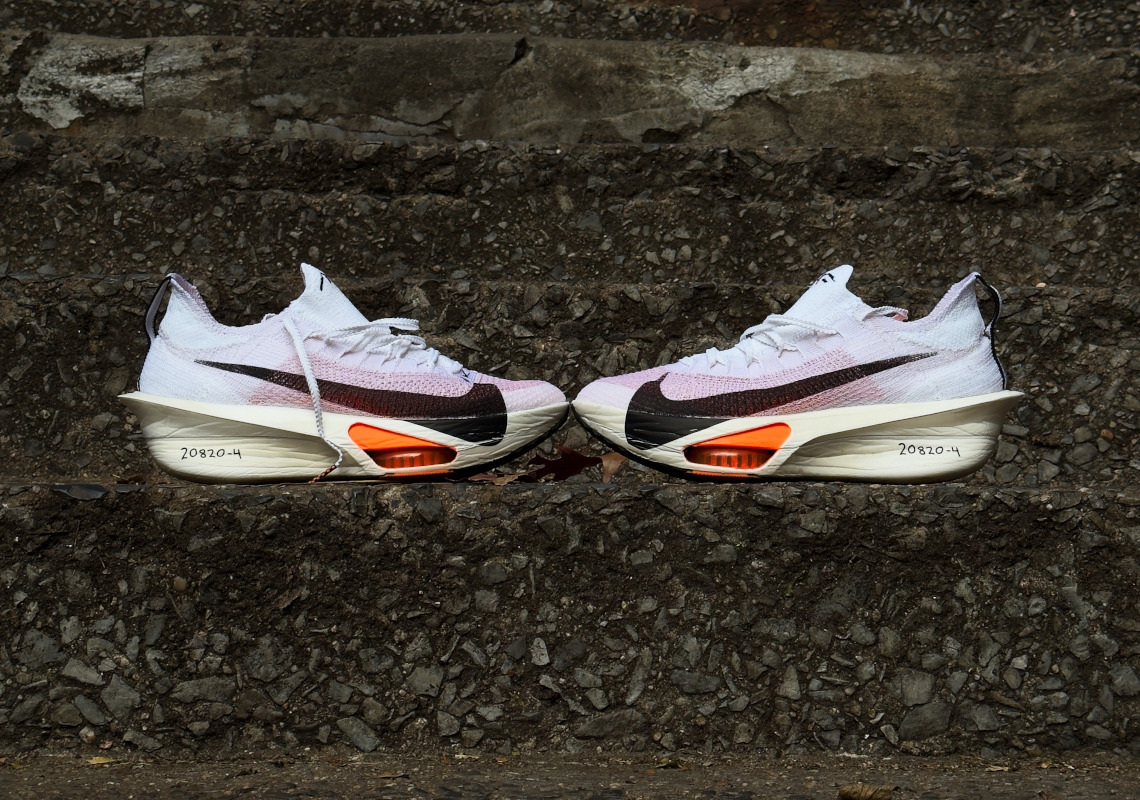
While I can praise the visible Air setup in the Alphafly 3 for at least a few more sentences, I’d like to acknowledge the ZoomX engine that’s been powering some of Nike Running’s best products for years now. I don’t have a durometer or scientific way of comparing ZoomX foams on different models, but the third Alphafly’s feels softer than the Vaporfly 3’s, for example. Underfoot, the story is the same, although what I noticed most during my two runs was the foam’s shape. My foot felt well-contained and even guided with every step, in particular when my running form was at its cleanest. This quality truly came in handy (in footy?) during the sessions’ third quarters, when self-doubt and sluggishness began to settle. Had I been in any other shoe, there’s a (very) high probability that I would’ve cut both of my runs short as I would’ve felt like I was working harder than I should be given my recent training loads.
On three separate occasions I stepped on things that messed with my balance, but my foot immediately got back into place thanks to the Alphafly midsole’s geometry.
I can’t currently judge how well the shoe’s new Fast Shot outsole performs as I haven’t tested it in wet conditions. After almost 10 miles and several missteps across streets in the Bronx, however, every rubber component is intact.
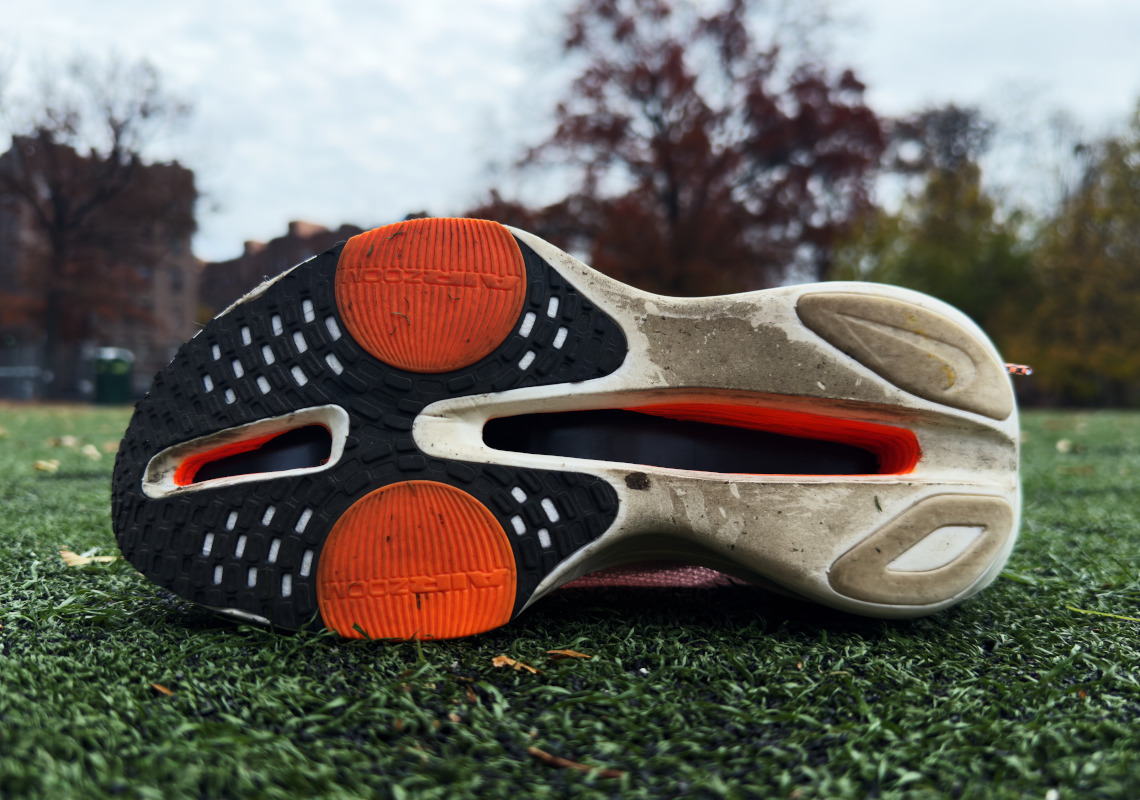
I’d be remiss if I didn’t write anything about the Alphafly 3’s “Prototype” colorway. If there’s anything that I’ve been biased about over the last 2082 words, it’d be my fandom of Nike Running’s “Prototype” series. I’m a sucker for predominantly white-colored running shoes as I think they make wearers look faster and more professional than they might be. The “handwritten” details on the shoe – the athlete wear-test number 20820-4 and “V62” figure that references all the different upper iterations – and vibrant orange Zoom Air unit only adds to my opinion. My only gripe with the “Prototype” look is the paintjob of the swoosh’s midsole portion: out-of-the-box, the black paint was uneven due to the creases in the ZoomX foam. I hope future colorways don’t have this issue.
The Nike Alphafly 3 is a lovely shoe. I’m a fan of the insatiable hunger for improvement that it represents, as well as what it’s helped elite athletes accomplish thus far. In maintaining the trust between us, I must confess that I’m nowhere near the fitness level needed to break a world marathon record, but I’m excited to cut down my half-marathon and marathon times to under 2-hours and 4-hours and 30-minutes, respectively. I’ll likely keep the “Prototype” pair in the box until my training requires long runs at a considerable pace. Part of me wants to keep the pair in the box forever, preserving a slice of history of which I’ve indirectly been a part.

Spending $285 USD on a running shoe is a lot. The people at Nike know this, which is why they’ve gone through the measures to develop a product that’ll last at least 200 miles (321.9 kilometers). It’s improbable that the silhouette will go on sale anytime soon after its debut on January 4th, 2024, so your best bet is to see the purchase as an investment. Please keep in mind that the shoes alone will not make you a better runner – you’ll still have to put in the work (trust me, I’ve tried).
To close, I’ll write this: It’s great to see the pioneer back on top. Kiptum may do it again in April 2024 at the Rotterdam Marathon. A newcomer may demand attention, too. Regardless of what the next 12-month stretch looks like, there’s something special about imagining the countless non-elite runners achieving new personal bests, fostering community, and falling in love with the sport (again) – through and without the Alphafly 3.
Official Images
Nike’s debut Alphafly 3 (Men’s SKU: FD8356-100; Women’s SKU: FD8357-100) is clad in “White/Black-Phantom-Total Orange.” The shoe box participates in the “Prototype” theme, too. A draw string carrying bag is included with the $285 running shoe.
